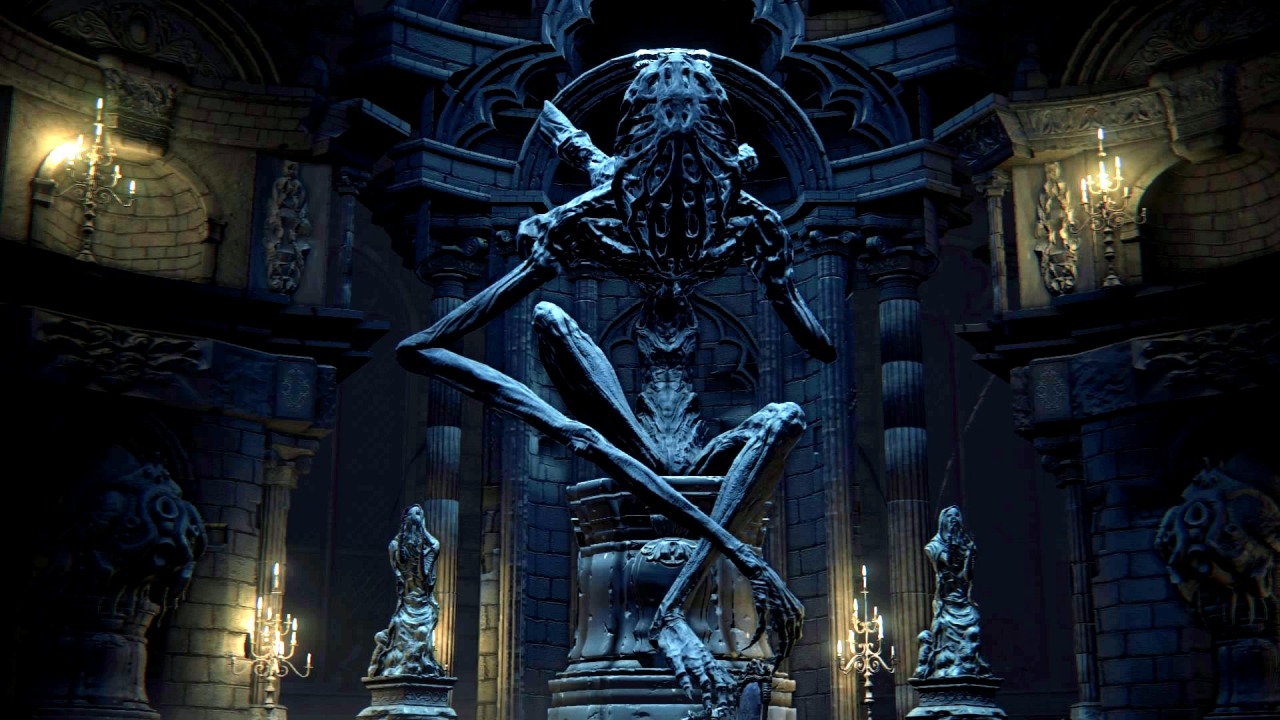With a Terrible Fate was honored to present a panel at PAX Australia 2016 entitled “Press X to Scream: Horror Storytelling in Video Games.” In the months since our presentation, we’ve been publishing our work from the panel in argument form, for the benefit of those viewers who were unable to attend. Now that all of the PAX Aus content has been published, we’ve aggregated it all in once place so that you can experience our entire presentation in written form.
philosophy
Breath of the Wild: The Hero Who Never Was
Introduction
After years of waiting, the world has the latest Zelda treasure that Nintendo promised: The Legend of Zelda: Breath of the Wild, with a new console—the Switch—to boot. There’s broad agreement among fans and critics alike that Nintendo did what they set out to do with Breath of the Wild: more than ever before, they succeeded in creating what Shigeru Miyamoto famously called “a miniature garden that you can put into a drawer and revisit any time you like.” Indeed, many players who bought Breath of the Wild immediately upon its release three months ago (myself included) are still returning to it and discovering new features of the world.
Today, Breath of the Wild meets With a Terrible Fate. This article isn’t a review of the game, although its analysis is my best attempt at adjudicating and explaining my many, widely varied feelings about the game. And I think that this sort of response to the game is natural. After all, Nintendo broke from the recent Zelda formula in many ways for Breath of the Wild: they added voice acting; they created a massively open world; they invented a hybrid console to support the game; they told a huge amount of the game’s story through cinematic flashbacks (well, maybe they were flashbacks—but more on that later). Players of the game have a lot to process, and I think it will take a long time before we’ve really wrapped our head around Breath of the Wild.
I think that Breath of the Wild represents a new, philosophically challenging synthesis of (1) game console, (2) open-world storytelling, and (3) Zelda theming. In this article, I’m going to present an analysis of Breath of the Wild that will hopefully go some distance in both explaining why some people love the game and why some people don’t love the game. Put briefly, I want to convince you that the game is lying to you about something: the Shrine of Resurrection doesn’t really “resurrect” people in the way the player is led to believe. Figuring out exactly what the player’s avatar is, then, will allow us to understand both the story of Breath of the Wild and the player’s relation to that story in a new way. Be warned of Zelda spoilers throughout.
1. Two Puzzles
I want to begin by motivating my analyses with the two puzzles in Breath of the Wild that got me thinking about the problem of Link’s identity: fast travel and the Sheikah Slate. Once we get these puzzles on the table, we will be poised to explain exactly how the avatar and the player are connected to one another.
While most gamer’s were justifiably exhilarated by the panoramic view of Breath of the Wild’s absolutely massive world at the start of the game, I was much more interested in a different visual:
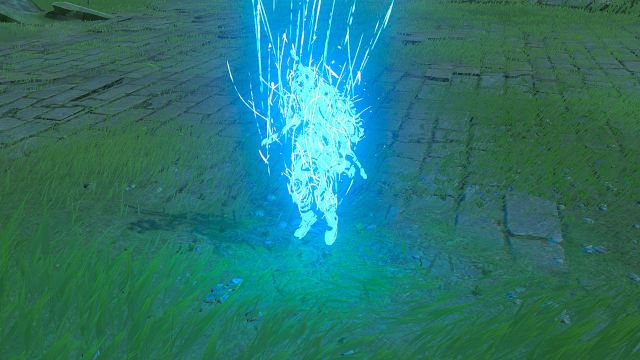
This is what it looks like when Link “fast-travels” in Breath of the Wild—that is, when he teleports from one location on the map to another instantaneously. Such a mechanic, of course, is crucial for a game with a world as massive as Breath of the Wild’s. When the player decides to make Link fast-travel, he is decomposed into a stream of blue particles, which evaporates and then reconstitutes him at his destination.
Of course, this is hardly the first time that a Zelda game has featured a method of fast travel: Farore’s Wind is a spell that lets Link teleport within dungeons in Ocarina of Time; the “Song of Soaring” lets Link travel from one Owl Statue to another in Majora’s Mask; Midna can transport Wolf Link in between Twilight Portals in Twilight Princess; and so on. What’s interesting, though, is that Zelda as a series has always been adept at integrating fast travel into the overall logic of the games’ worlds and stories. Farore’s Wind can presumably teleport Link by harnessing the goddess Farore’s dominion over living beings, since she created them at the beginning of the world; the power of the “Song of Soaring” derives from Kaepora Gaebora’s metaphysically external position relative to Termina, as I discussed in my work on Majora’s Mask; and Link’s wolf form renders him a creature of the Twilight Realm, which presumably grants Midna, as the Twilight Princess, the ability to move him through the twilight at will. Zelda isn’t one for deus ex machina fast travel, where the player decides to have his avatar fast-travel thousands of miles and this simply happens without any available explanation within the story.
With this background, it makes sense to ask what explanation there is for Link’s ability to fast-travel in Breath of the Wild. The game doesn’t give us much explicit information to go on here. We know that it’s facilitated by ancient Sheikah technology, since (1) fast travel decomposes Link into strands of the same blue energy/material that appears in active Sheikah technology, (2) fast travel is activated as the same time that Link activates the Sheikah network of towers across Hyrule, and (3) Link can only fast-travel to conduits of Sheikah technology—Towers, Shrines, Divine Beasts, and laboratories. But this information doesn’t answer our question. After all, how can Sheikah technology decompose and then reconstitute a living being? This isn’t supposed to be a divine power like Farore’s Wind: it’s emphasized in this game more than ever before that the Sheikah developed technology, not magic. And there’s no talk of any universal, Lifestream-like, organic energy that Sheikah technology could harness to move a human being from one place to another. And it’s not as simple as the Sheikah Slate somehow facilitating faster-than-light travel: fast-travel only operates on Link and his equipment; other beings—e.g., Link’s horses—can’t be teleported, either along with Link or on their own. So here we have the first of our two puzzles: Sheikah technology facilitates fast travel, but it’s not clear how it does so.
The Sheikah Slate acts as Link’s most immediate and direct access to Sheikah technology, and it’s through this piece of technology that Link is able to fast travel. So it makes sense to seek out an explanation of fast-travel in an analysis of precisely what the Sheikah Slate is. But here, again, the game doesn’t offer much by way of an explicit explanation. Zelda’s research notes on the Slate just discuss its ability to function as a camera; beyond these notes, all we really have to go on are the Slate’s various other functions: it can activate shrines, acquire regional data from Sheikah towers, and enable the various capabilities of runes. Because Link finds it in the Shrine of Resurrection when he wakes up there at the beginning of the game, it presumably also has something to do with the functions of that special Shrine—but that relationship is far from obvious (we’ll return to it later).
There’s another aspect of mystery surrounding the Sheikah Slate: it looks just like the player’s controller—either the gamepad of the Wii U, or the Switch in its handheld configuration (this analysis will presume use of the Switch rather than the Wii U, however).
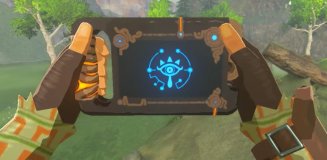
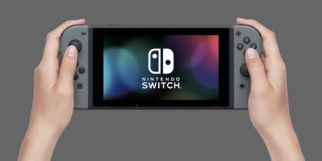
Of course, this fact isn’t inherently mysterious: Nintendo obviously drew the connection between the fictional and real technologies intentionally. Nor is this the first time that they’ve combined their hardware with the stories of the Zelda series in novel ways—in fact, it’s become the norm for them to do this. Phantom Hourglass takes advantage of the 3DS’s stylus by making the player use the stylus to move Link; Skyward Sword effectively turns the Wii’s controller, the motion-controlled Wiimote, into a “sword” that directs the motion of Link’s sword in the game. The mystery here instead comes from the potential for the relationship between Sheikah Slate and game controller to play an important part in the fictional relationship between Link and the player of Breath of the Wild.
Regulars to With a Terrible Fate know how heavily I emphasize the relationship between player and avatar as a central feature of video-game storytelling: I argued extensively that you can’t hope to understand Majora’s Mask without understanding the role of the player in its story, and I more recently developed a theory of video games according to which the player of a video game always plays a foundational, metaphysical role in that game’s story—a role that is different in kind from the role of the avatar within that story. Since the player can be involved in video-game stories and related to avatars in a multitude of complex and narratively important ways, it’s natural to ask whether the apparent similarity between the player’s physical controller and the avatar’s main means of navigating the game’s world has any deep meaning within the game’s story.
So, in trying to solve our first puzzle about the nature of fast-travel, we’ve arrived at a second puzzle: what exactly is the Sheikah Slate, and does it have any narratively significant bearing on the relationship between Link and the player? And now it’s intuitive to take up the task of exploring exactly who, or what, Link the avatar is in Breath of the Wild. After all, we already know a good amount about the player—we are the player, after all—and we’ve seen that direct information about the Sheikah Slate and fast-travel is limited. Link is the one remaining variable in our puzzles of fast travel, the Sheikah Slate, the player, and the avatar. It’s time to take a closer look at what we know about him.
2. The True Blank Slate
I want to convince you that the solution to our two puzzles is a radical idea that contradicts one of the explicit statements affirmed by various characters within Breath of the Wild: I contend that the Link who lived and died 100 years before Breath of the Wild’s events wasn’t actually resurrected by the Shrine of Resurrection. Rather, the Shrine of Resurrection created a mechanical copy of Link that can be “piloted” by the player in much the same way as the Divine Beasts of the game are piloted by their respective Champions. I’ll argue that this analysis not only solves the two puzzles discussed above, but also does a better job of holistically analyzing the technology of the Sheikah and accounting for the dynamics of the 18 Link-memories you can acquire over the course of the game. I’ll then reply to objections that (1) this analysis contradicts the very game it proposes to analyze and (2) the analysis doesn’t have enough explanatory clout to be preferable to the more intuitive view that Link really was resurrected. This will lead us naturally to this view’s broader implications for understanding Breath of the Wild’s method of open-world storytelling.
Here’s what we know (from Impa, King Rhoam, and others) about the ancient Sheikah who developed cutting-edge technology 10,000 years before the events of Breath of the Wild: in a time of societal prosperity and technological innovation, the Sheikah developed a system of machinery to combat the recurring threat of Calamity Ganon. This technology included: an autonomous army of Guardian machines; four Divine Beasts that required piloting by heroes called “Champions”; a network of Shrines and Towers designed to guide and train a chosen hero; a Shrine of Resurrection that is (according to Zelda) “a medical facility with the power to heal”; and Sheikah Slates that somehow serve as a catalyst for much of the other technology. This technology, buried in the earth, led to a prophecy being propagated that “the power to oppose [the resurrection of Calamity Ganon] lies dormant beneath the ground.”
The first thing to notice here is that the Shrine of Resurrection is something of a non sequitur in the suite of Sheikah technology: it’s not a weapon like the Guardians and Divine Beasts, nor is it a guidance/training catalyst like the Shrines and Towers. It’s not obvious why the Sheikah would even build such a healing device to operate on people, given that they had already developed a fully automated army and a team of four super-machines. More to the point, it’s the only piece of Sheikah technology that apparently operates on organic matter: instead of simply being an advanced piece of machinery, this machinery promises to manipulate the vitality of organisms. Of course, none of this is a knock-down argument that the Shrine of Resurrection couldn’t possibly do what it purports to do: the point is just that the supposed functionality of the Shine of Resurrection is somewhat dissonant with the rest of the Sheikah technology presented in the game. So it’s worth at least exploring whether an alternative analysis might provide a more unified picture of Sheikah technology—especially if such an analysis also turns out to shed additional explanatory light on the rest of Breath of the Wild’s story and world.
Here’s such an alternative analysis: imagine that instead of healing someone by putting them in a “long-term stasis,” the Shrine of Resurrection “resurrects” people by generating a mechanical copy of them: an “android” of sorts that mimics their body without capturing the contents of their mind or soul (we know that things like souls exist in the game’s world from the discussion of many characters). The copy could mimic the deceased person’s mind by having their memories uploaded onto them in some way; it could be trained as a hero through the Shrines across the world; and, crucially, it could be controlled by a pilot like a Divine Beast.
![]()
This, I propose, is the best available analysis for the real nature of the avatar that the Shrine of Resurrection created: the avatar is not Link, but rather a mechanical copy of him that the player of the game “pilots.” While this view might initially seem radically unmotivated, it actually has distinctive theoretical benefits. In particular, it casts the Sheikah’s technological program in a new, coherently logical light; it also makes new sense of how the avatar’s identity evolves in accordance with the player’s actions over the course of the game.
Here’s a problem with the story of the Sheikah: if we take Breath of the Wild at face value, then we’re forced to accept that the Sheikah both had incredible foresight and terrible foresight. On the one hand, they were advanced enough to anticipate the return of Calamity Ganon and devise an intricate system of autonomous machines, pilot-driven machines, and a network of Shrines and Towers to combat this return. On the other hand, they somehow failed to anticipate that Calamity Ganon would be able to take control of both their autonomous and pilot-driven machine armies. How are we supposed to reconcile the Sheikah’s technological mastery with this glaring design flaw in their program?
My favored solution is that the Sheikah actually did anticipate the risk of Calamity Ganon wresting control of their machines from them. On my view, the Shrine of Resurrection was designed to combat this specific threat. The logic of the Sheikah, as I see it, is the following. What’s the easiest sort of army to mass-manufacture? An army of autonomous machines (the Guardians). What do you do if your enemy can possess those machines? Build machines with human pilots as a failsafe (the Divine Beasts). And what if your enemy can kill those pilots, possessing these new machines just as easily as the old ones? Build a machine controlled by a pilot who is beyond the reach of your enemy.
Here’s where some console theory comes in. The idea is that the Switch is a representation in the player’s world of the Sheikah Slate in the avatar’s world, linking the avatar to the player in such a way that the player can control the avatar in the same way that the Champions control the Divine Beasts. In effect, this metaphysical correspondence between the Sheikah Slate and the Switch allows the player to control the avatar while remaining in a discrete world from the avatar’s—a world that is safe from Calamity Ganon. Ganon obviously cannot kill you, the player, and thus the avatar is safe from the danger of being controlled by Ganon like the Guardians and Divine Beasts were.
How outlandish is the idea that the relationship between Switch and Sheikah Slate allows the player, within the fiction of the game, to control a Link-automaton? Not especially. First, notice that interdimensional travel and communication isn’t a foreign concept in the Zelda series more broadly: for instance, A Link Between Worlds centrally features the traversing of dimensional barriers between Hyrule and Lorule, and various iterations of the series’ time-travel mechanics (e.g., the cross-temporal communication in Ocarina of Time’s Spirit Temple) come theoretically quite close to communication between dimensions of some sort of another. Even the concept of one sentient being possessing another humanoid being is familiar to the series: recall Ganondorf’s possession of Zelda in Twilight Princess, or the recurring mechanic of Link controlling statues. Moreover, one of the few analyses of the Sheikah Slate that the game gives us invites this kind of analysis. According to Zelda’s research notes, the Slate can produce “Perfect likenesses of the things you point it at.” The most obvious meaning behind this comment is that the Sheikah Slate can photograph the world around Link; however, the language also suggests that the Slate is able to represent reality while also controlling reality through corresponding Sheikah technologies like Guidance Stones (also discussed in Zelda’s notes). It doesn’t seem like a stretch that the Switch, which already corresponds to the Sheikah Slate in physical appearance, and its ability to be carried throughout the world, could also, within the game’s fiction, represent and exert control over a reality: and in this regard, Zelda’s research on the Sheikah Slate gives us an in-game explanation for the functionality of the Switch. The Switch acts as a Sheikah artifact that represents to the player the reality of Hyrule, and, through its metaphysical correspondence with the Sheikah Slate, bridges the gap between Hyrule’s dimension and the player’s dimension, allowing the player to pilot the Link-automaton through its reality.
Notice that this analysis easily explains the two puzzles we considered in the previous section. If the avatar of Breath of the Wild is itself a piece of Sheikah technology, then it makes sense that it could be decomposed and reconstituted across the broader network of Sheikah warp points—we don’t need to invoke anything like faster-than-light transportation of a unique human in order to understand this phenomenon. And of course, based on this analysis, the Sheikah Slate has a very narratively significant bearing on the relationship between player and avatar. In fact, this analysis has the added benefit of explaining why the Sheikah Slate is central to reactivating all of the Shrines and Towers at the beginning of the game: These locations are designed, according to Zelda, “to train the hero who is fated to combat the Calamity.” When the player arrives at the beginning of the game, the fated hero also arrives—because you, the player, are that fated hero.
Wait: isn’t Link the fated hero? Well, not really. First, there’s no indication within the game that the avatar possesses the Triforce of Courage, the standard, conspicuous symbol of Link’s evil-quashing destiny throughout the series (and a symbol equally absent from Majora’s Mask). It’s not even evident that the avatar is “chosen” by the Master Sword, like Link typically is: the only requirement for successfully pulling the Master Sword from its pedestal is the avatar having enough hearts, which hardly seems representative of a chosen destiny. And, further, it makes sense that the Sheikah would want to design a flexible Shrine of Resurrection in the sense of making it able to construct a mechanical mimic of any warrior brought there: the final failsafe in a world-saving system would presumably be best-designed if it were dynamic enough to accommodate a wide variety of potential avatars, adaptable to a wide variety of potential obstacles. (Notice that this flexibility also explains why the Shrine wouldn’t automatically implant its mechanical avatar with all of the source human’s memories—more on that below.) The key to the system’s success would be the competency of the avatar’s pilot—i.e. the player—and thus it is in the pilot that the true heroism rests. (And, as a nice bonus, you get from this the feel-good conclusion that, in a metaphysically deep sense, the player really gets to be a hero in Breath of the Wild.)
So the system of mechanical avatar, Sheikah Slate, Shrines, runes, and Towers all activate in response to the player picking up the Switch and activating the Sheikah’s last failsafe. This analysis thus provides us with the unifying understanding of Sheikah technology that the intuitive, face-value understanding of the game lacks.
Subsequently, we also get an improved understanding of the avatar’s acquisition of memories over the course of the game. To see this, first notice another puzzle with the face-value analysis of Breath of the Wild’s story: if the avatar is really just a revived Link with memory loss, then why is it that his memory can only be retrieved in discrete chunks at extremely precise locations throughout the world? No doubt, it might be the case that a specific location could plausibly jog an amnesiac’s memory; but one would suppose that, once memories started returning, the memories would cascade, emerging and filling in gaps in the amnesiac’s overall identity and mental repository at an increasing rate. The story of the avatar regaining memories doesn’t work this way: the player can find at most 18, discrete memories of Link’s, and they are all capable of being accessed only by the avatar observing a specific location.
If the avatar is really supposed to be Link, then it’s mysterious why he ends up with only 18 memories and can only derive memories from specific locations; buying into this interpretation of the story means we essentially have to throw up our hands here and say that the game admits of no further explanation. On the other hand, the analysis of the avatar as an automaton emulating Link naturally invites an explanation about the dynamics of memory acquisition: we know that the Sheikah Slate (and other technology like the Towers, for that matter) is capable of recording and representing data from the physical world around it; it’s a modest extension of this notion to suppose that the Sheikah Slate could record the experiences of its owner and associate these recorded experiences with the physical locations where they took place. In fact, this method of representing content in physical space is strongly analogous to the Slate’s ability to represent columns of colored light at various points in the world as location markers (or “pins”) throughout the player’s journey.
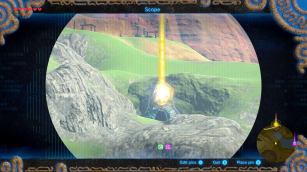
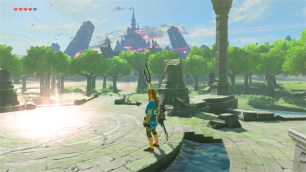
On this view, the Sheikah Slate, while in Link’s possession 100 years before the game, recorded 18 of his central memories, associating them with the locations where they happened. When the Sheikah Slate was implemented to create a copy of Link, it also made it possible for this copy to acquire those 18 memories by traveling to those locations. This explains why the game memories are all tied to specific physical spaces, as well as why the memories are discretely acquired without triggering a cascade of further memory recall (i.e. the cascade we would expect if the avatar were an amnesia-ridden Link).
I’ve argued thus far that the analysis of Breath of the Wild’s avatar as a mechanical copy of Link unifies the purpose of Sheikah technology, explains the game’s fast-travel mechanic, illuminates the relation between the player, avatar, Sheikah Slate, and Switch, and accommodates the memory acquisition method uniquely well. But is this enough to make the analysis plausible? You might have two objections in particular: maybe you’re worried about an analysis that rejects the game’s explicit statement that Link was, in fact, resurrected; or, maybe you’re worried that the intuitive value of the view that Link was resurrected simply trumps the explanatory virtues of the analysis I’ve outlined here. Neither of these objections, I think, should deter us for long.
Zelda games, more than most games, are often heavily analyzed through the lens of “canon”: the official, Nintendo-licensed interpretation of how the series’ titles fit together into a coherent set of timelines. This canon mentality, I think, makes some people reticent to doubt any of the explicit information about the Zelda universe provided by the games. Nintendo’s words, and the words they encode in their games, are often taken as law in one way or another.
There’s of course value in theorizing about the Zelda canon—for example, hypothesizing about how Breath of the Wild fits into the Zelda timelines—but it’s dangerous to focus on canon to the exclusion of all other analytical methods. A common, established storytelling device is unreliable narration: stories in which a narrator or various aspects of the story’s representation are dubious within the overall ecosystem of the story and its world. This is how The Sound and the Fury works; this is how Fight Club works; this, I’ve argued, is how Majora’s Mask works. To focus only on the letter of canon and on the information a game literally endorses is to ignore the nuances of a story’s overall world: oftentimes, making sense of a game’s universe requires reinterpreting various data from the game’s story in order to gain a maximally coherent understanding of the overall work of art. So I don’t take the objection that my analysis contradicts the game’s claims about Link’s resurrection as a compelling counterargument.
Of course, we should be able to offer an explanation of why the game suggests Link really was resurrected, if he in fact wasn’t resurrected. As I see it, there are two possible explanations: either no one in the age of Breath of the Wild was able to uncover the real nature of the Shrine of Resurrection, and so researchers like Zelda and Ms. Purah mistakenly believe that the Shrine resurrects people instead of creating pilotable, machine copies of them; or, researchers like Zelda and Ms. Purah did discover the true nature of the Shrine of Resurrection, and are willfully deceiving the player and avatar about it. My view is that the former of these explanations is the most plausible: presumably the efficacy of a machine replica of a human would be severely hindered if the machine and those around it didn’t genuinely believe that the machine really was the person of whom it was actually a copy. So we do in fact have a plausible explanation of why the beliefs of the characters in the game about the Shrine of Resurrection contradict the actual nature of the Shrine: the Sheikah probably intentionally propagated this misinformation in order to ensure the machine replica could operate effectively.
But even still, are the explanatory resources furnished by this analysis really sufficient to give up on the notion that the avatar of Breath of the Wild is Link? You might think that any argument that concludes that Link isn’t the avatar in a Zelda game thereby defeats itself. After all, what is a Zelda game if not a game in which the player’s avatar is Link?
The point is well taken: it’s hard to make sense of a Zelda game without Link as an avatar. But, in the last section of this piece, I want to show you that this is the most logical, albeit potentially unsatisfying, choice of avatar possible in the overall storytelling of Breath of the Wild: the player’s avatar can become Link, but it doesn’t have to do so. The avatar is a blank slate that can evolve in myriad ways.
3. Open World and Open Avatar
Finally, when we understand how the avatar’s status as a machine imitation of Link allows players to choose whether or not the avatar becomes Link, we will understand in a new and robust way how Breath of the Wild weaves its story and character development into a vast, diverse, open world. This, as I promised at the outset, will shed light both on why people like the game, and on why people don’t like the game.
As the player accesses the various Link-memories strewn across the world, she gains more access to Link’s history, and the machine avatar comes to more closely emulate the mind and personhood of Link. The result is that, if the player takes the time to acquire all 18 of Link’s memories, she really feel as if her avatar has come into being the Link she knows and expects from other games: the memories have made the once-blank avatar a more compelling copy of the hero of legend. It’s telling, in this regard, that the last line of the game’s initial ending is Zelda asking the avatar, following the defeat of Ganon, “Do you really remember me?” The scene fades to black without the avatar giving a definitive answer; it is only once the player has acquired all 18 memories that a subsequent ending sequence will play, which shows Zelda and the avatar working together—like Zelda and Link once did in the memories—in a post-Ganon Hyrule. This reinforces the idea that the avatar only really becomes a full copy of Link, capable of recognizing Zelda, upon accessing all of the Link-memories left for him throughout Hyrule.
But of course, the player can spend uncountably many hours journeying through Hyrule without acquiring any of these memories, and without pursuing the game’s “main quest” to save Zelda and defeat Calamity Ganon. And from our analysis, it follows that a player who does this—exploring Hyrule without pursuing the main quest—thereby controls an avatar that is not Link in any way but his physical appearance. Why does this matter? Surprisingly, this unusual use of a mechanical avatar ends up circumventing a central problem of modern video-game storytelling in open worlds.
Games these days are increasingly focused on open worlds: environments with a huge number of potential paths and adventures that the player can explore in any order, with little regard to how far the player has advanced in the game’s primary storyline (i.e. the one that consists of the game’s central events and typically ends with the credits). This strategy seems like a promising way to afford players more choice and a more dynamic sense of exploration in the game’s world, but it can bring deep problems for storytelling—especially where tales of destiny are concerned.
Consider as an example Final Fantasy XV. The game is at once about a prince (Noctis) who goes on a destined quest to save the world, and also about that prince going on a roadtrip-adventure with his three closest friends. The open world of the game brings about a challenging tension between these two central themes: in particular, every moment that Noctis and his friends adventure around the world completing sidequests is a moment in which Noctis is shirking his duty and putting off saving the world. A similar problem exists in games like Skyrim, but it’s particularly apparent in Final Fantasy XV because the alternatives to the main quest of heroism are often mere leisure activities like driving in a convertible, fishing, hiking, camping, and hunting—activities that it’s hard to believe could ever justly take precedence over saving the world.
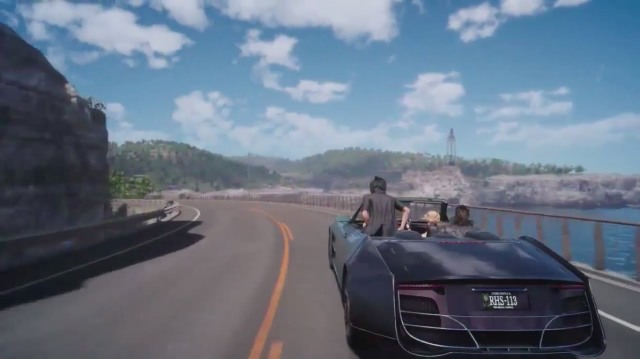
The mechanical identity of Breath of the Wild’s avatar allows the game to solve this problem of open-world storytelling in an unexpected, surprisingly simple way. So long as the player is focusing on sidequests and not collecting Link’s memories, the avatar remains nothing more than a physical copy of Link’s body; thus it stands to reason that the avatar is not under the same obligation as the hero Link to undergo the hero’s quest and defeat Ganon. It is only once the player begins aggregating Link’s memories, thereby molding the avatar’s identity into that of Link, that the avatar becomes correspondingly obligated to save Hyrule from Ganon. Because the avatar’s identity evolves with the choices of the player to pursue or avoid the main quest, the avatar is not automatically blameworthy for avoiding the main quest in the way that Prince Noctis or the Dragonborn would be.
But wouldn’t a Sheikah-designed machine have the same purpose—and therefore the same obligation—to save the world from Ganon, much like the purpose of the Guardians and Divine Beasts? That doesn’t seem right: as I emphasized above, it stands to reason that the Shrine would have an especially flexible design in virtue of being the last failsafe on the Sheikah’s technological system. The final failsafe would ideally be able to accommodate a wide array of potential scenarios and tasks in order to effectively overcome whatever obstacles might impede the previous technological layers of the Sheikah’s system; thus, it would make sense for them to leave the avatar’s purpose up to its pilot—that is, the player. This would explain why the Sheikah would make the prior mental life and identity of the human on whom the machine copy was based an entirely optional component of the machine’s composition, to be acquired only if the player sees fit. This is why any obligation the avatar incurs is contingent on the player’s decision to incur the avatar with that obligation. (One might be able to make the argument that the player, as the avatar’s pilot, is obligated to use it responsibly by saving the world; but even if that were the case, that would be a stark difference from the avatar being so obligated, as Link is in so many other Zelda titles.)
As I said, these dynamics of the avatar’s identity explain why the game is both likable and unlikable. To the first point, the player is free to explore Hyrule with impunity because their avatar is under no intrinsic obligation to save the world in the way that Link would be. But to the second point, notice how radical a departure this is from the typical (but not ubiquitous) Zelda formula: the series is renowned for giving the player control of a chosen hero who must fulfill his destiny by saving the world from evil. To be given control of an automaton for which saving the world is optional therefore has the potential to be deeply unsettling in the broader context of the series: the freedom to explore, so deeply enmeshed in the ethos of the game, cuts against the grain of good-against-evil destiny: it invites the player to take her avatar and cook food instead of combatting Ganon.
Conclusion
With all the Sheikah technology permeating Breath of the Wild’s world, maybe it shouldn’t be so surprising after all that the avatar is a piece of Sheikah technology as well. By analyzing the game in this way, not only do we glean a stronger understanding of their technological program and of the player’s relationship to the game, but we also gain a new theoretical basis for the exploratory freedom central to Breath of the Wild’s method of storytelling. The story may distance players from the real Link, but it only does so in order to give them a new kind of choice: a choice to make their avatar the kind of person who is bound by destiny, or to decline that mantle of destiny altogether.
Where are the Humans in NieR: Automata?
Introduction
Regulars of With a Terrible Fate know that Nier is near and dear to my heart because it was the game that first motivated me to write analytically about video games, even before my work on Majora’s Mask. You can therefore imagine how excited I was when the game was given a sequel, NieR: Automata. While I was initially worried that it would fall short of its predecessor, I think it’s safe to say that NieR: Automata ended up being even philosophically richer than Nier. To that end, it’s time that NieR: Automata met With a Terrible Fate.
Regular readers also know that my analytic method with respect to video games typically focuses on clarifying the precise and often surprising relations in which the players of video games stand to the stories of video games. In that regard, this paper is no exception: I want to convince you that you, the player, are involved in the story of NieR: Automata in a surprising and illuminating way. But, for the sake of full transparency, I’ll start by warning you that, as you might imagine, this work contains LIBERAL SPOILERS for NieR: Automata, Nier, and Drakengard (starting in the next paragraph!). If you’re at all familiar with Nier and/or NieR: Automata, then you know that the stories of these games deeply depend on facts that are only revealed quite late in the game; so, if you haven’t yet played through the games, I wouldn’t recommend reading this yet.
With that in mind, let me offer a roadmap of the paper. I frame this analysis as the attempt to answer a seemingly simple question: “Where are the humans in NieR: Automata?” Now, if you’ve only just started the game, you’d probably say, “They’re on the moon, obviously”; if instead you’ve played through the whole game, you’d probably say that this is an ill-posed question because, at the time of NieR: Automata’s events, humans are long-extinct—there are only machines lifeforms, androids, animals, plants, and pods. Fair enough; however, it’s undeniable that the presence of humanity is virtually ubiquitous in the world of the game. Machine lifeforms slowly recover human culture and become sentient; androids identify themselves as sentient even before machine lifeforms do; by the end of Ending E, even the simple pods that accompany androids are beginning to exhibit “human” traits like compassion and attachment. So when I ask where the humans are in the game, what I’m really asking is what the origin is of all these specifically human properties that the various organisms in the game eventually instantiate—especially the property of sentience, or self-awareness. You might think the answer is simply that these human properties originated in the humans that went extinct long ago in the game’s world; after all, the game mentions that the human characteristics of the androids are the result of their human creators.
It’s this second response that I want to challenge: I think that the player, rather than the extinct humans of the game’s world, are the source of the sentience that emerges in androids, machine lifeforms, and pods throughout the course of the game. I begin by clarifying the scope of my thesis, in an effort to show that, so far as I can see, my claims don’t threaten what one might call “canonical” interpretations of the game’s story. Then, I use an analysis of player-avatar relations to argue that the player is the origin of sentience and humanity in Nier and NieR: Automata. This, I think, is a fairly easy thesis to endorse. After this is established, I argue for the significantly more controversial thesis that the fictional world of NieR: Automata is actually nothing more than a data structure; that is to say, it is true within the fiction of the game that the world is just a computer simulation being manipulated by a real player. Finally, I conclude by explaining why these theses matter for understanding NieR: Automata: the game’s metaphysics, I argue, establishes unexpected, fictional, ethical mandates that bind the player as they engage the game.
1. Preliminaries
In the past—especially in my initial, four-year-old work on Nier—I have sometimes failed to be sufficiently clear about the scope and level on which my analyses of video games have applied, which has led to some confusion about how my work ought to be evaluated in comparison with competing analyses or interpretations of the games in question. This is an especially acute danger when discussing NieR: Automata because there are myriad possible ways in which one could interpret “the game.” To name a few: are you analyzing the game as a stand-alone narrative, or as the third installment in the three-part narrative sequence of Drakengard, Nier, and Nier: Automata? Are you analyzing the game as a set of equally possible narratives with 26 different endings, or are you analyzing the single narrative and ending within the game that you take to constitute the “true” story? And so on. There’s no obvious reason to endorse any one such analytical approach over the others; what matters is being clear on precisely what your analytical approach is, so as to avoid having it confused with other approaches in the vicinity. By clarifying my own approach in this way, I aim to show why the claims it generates about the game are fairly compatible with a wide array of other plausible analyses of the game.
To see what my project is up to, we need to distinguish between what we might think of as two “levels” of analysis. Call the first level of analysis ‘Narrative-Event Analysis’ (or ‘NE Analysis’), and define it as follows.
NE Analysis: The analysis or interpretation of the various events of a narrative, and of how those events are interrelated.
This is what most video game theorists and art critics are up to: they take the events of a given story and try to make meaning out of those events in a particular way. When YouTube personalities analyze and explain the lore of the Dark Souls games, they’re engaged in NE Analysis; when you try to sort out where the story of The Legend of Zelda: Breath of the Wild fits into the larger set of Zelda timelines, you’re engaged in NE Analysis; when you’re explaining how on earth the Shadowlord of Nier logically fits into Ending E of Drakengard, you’re engaged in NE Analysis. This is the time-honored tradition of taking the various events of a story and seeing how they best cohere with one another to form one meaningful, comprehensible work of art.

The question of where Breath of the Wild fits into Zelda timelines is a question for NE Analysis.
Now consider an altogether different level of analysis. Call it ‘Narrative-Grounding Analysis’ (‘NG Analysis’), and define it as follows.
NG Analysis: The analysis or interpretation of the metaphysical foundation in virtue of which the various events of a narrative obtain, and how that metaphysical foundation relates to the events that it actualizes.
Put this way, NG Analysis might sound unfamiliar, but (1) I think we often ask ourselves NG-Analysis questions about stories, and (2) this is the exact sort of analysis I’ve been applying to video games for several years now on this site. When you ask yourself what makes the constant regeneration of the Chosen Undead in Dark Souls possible, you are engaging in NG Analysis; when someone explains what it is about the world of Zelda that makes time travel possible, they are engaging in NG Analysis; when I am analyzing what makes it possible for machine and Replicants to become sentient in the world of Nier and NieR: Automata, I am engaging in NG Analysis. This is also the sort of analysis I was undertaking when I claimed that: the player is the source of moral reality in Majora’s Mask; the narrative of BioShock Infinite is a universal collapse event caused by the player; and the entirety of Bloodborne is a dream.
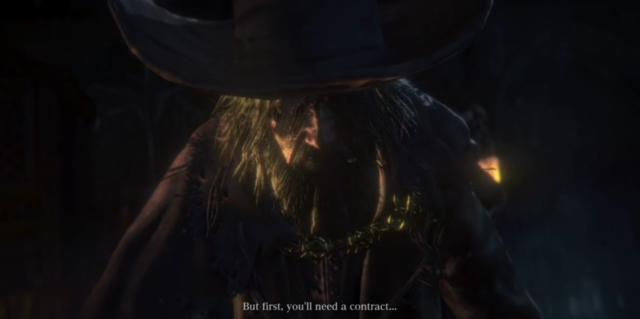
My analysis claiming that all of Bloodborne is a dream is an example of NG Analysis.
What’s crucial to notice about these two levels of analysis is that neither level of analysis, at least in any obvious way, makes claims about the other level of analysis. Insofar as this is true, the video game theorist is licensed to engage in NE Analysis about a game without worrying about what the right NG Analysis of the game is, and vice versa. For instance, suppose that you’re trying to decide between two competing theories of how Link is able to travel through time in the Zelda games: according to one theory, this is made possible by the will of the Goddess Hylia, and according to the other theory, it is made possible because Link is some special kind of entity that can freely move through time in a way that ordinary Hylians can’t.[1] These two theories are trying to explain the same narrative events, and they can’t both be right; that means that we have to choose between them if we want to have a correct understanding of the game’s story (assuming that one of these two theories is correct, as opposed to both of them being incorrect). However, neither of these theories is going to have anything to say about how time travel in the game works: they’re only going to say what makes time travel in the game possible. So consider a question like this: in The Legend of Zelda: Ocarina of Time, how do the actions of Adult Link affect the events that Young Link experiences seven years earlier? (Think of an example like the Spirit Temple, where Adult Link and Young Link are apparently “interacting” with each other across time.) This is a question about how the events of the game’s narrative relate to one another—which is to say, it’s a question for NE Analysis to resolve. Whether time travel is made possible by Hylia or by Link’s constitution isn’t going to have any direct bearing on how the events concerning Adult Link relate to the events concerning Young Link; to answer this question, we instead need an NE Analysis specific to those events (e.g., “time travel works by allowing Adult Link to rewrite events of the past”).
I’ve only aimed to show here that NE Analysis and NG analysis are indeed separate levels of analysis: when you’re engaged in NG analysis, you’re analyzing something fundamentally different than what you analyze in NE Analysis: in NG Analysis you analyze the metaphysical foundation of events in a story, whereas in NE Analysis you analyze the events themselves. Why does this matter as preliminaries to my analysis of NieR: Automata? Well, there are many interesting questions about how the events of NieR: Automata relate to each other, to the events of Nier, and to the events of Drakengard. To name a few potential questions of this sort: where did the aliens in NieR: Automata come from? How, if at all, does White Chlorination Syndrome relate to the Black Scrawl? What effects does 2B’s consciousness have on A2, after A2 kills 2B? It should be clear by now, I hope, that these are all questions that NE Analysis is tasked with answering. And it bears mentioning that, typically, when people talk about “canon interpretations” of a story—roughly, the “correct” interpretation of a story’s events, often deemed correct simply because the author says it’s correct—are interpretations that similarly belong to NE Analysis. Canonical interpretations of narratives rarely have anything substantive to say about the metaphysical grounds of a narrative’s events.
Recall that what I’m interested in pursuing in this paper is a matter of NG Analysis: namely, the question of what it is in virtue of which apparently human properties obtain in the world of NieR: Automata. Given what I’ve said, it follows that my arguments in this paper won’t directly bear on “canon” issues of how to properly interpret the events of the game on the level of NE Analysis. Put differently: if you already have some favorite theory about how the events of the game are interrelated, my work here doesn’t necessarily pose a threat to that theory.[2] If, on the other hand, you have a favorite theory about the metaphysical grounds of the narrative’s events (and I frankly haven’t seen any such theories out there yet), then my theory is a competitor to that theory, and you’ll have to see which seems more plausible to you upon reflection.
2. Becoming Human
I’ve established the level on which I intend my analysis to operate: in this paper, we’re exploring the metaphysical foundations of NieR: Automata. In this section, I offer an argument to the conclusion that the humanity of the player is what metaphysically grounds an entity’s “becoming sentient” (i.e. being self-aware and instantiating human properties) in NieR: Automata and NieR. I’ll make this argument by first focusing on the nature of maso and Project Gestalt, and then by extending it to the nature of machine lifeforms, androids, and pods. This will directly lead us to the argument of the next section—that the world of NieR: Automata is a data structure.
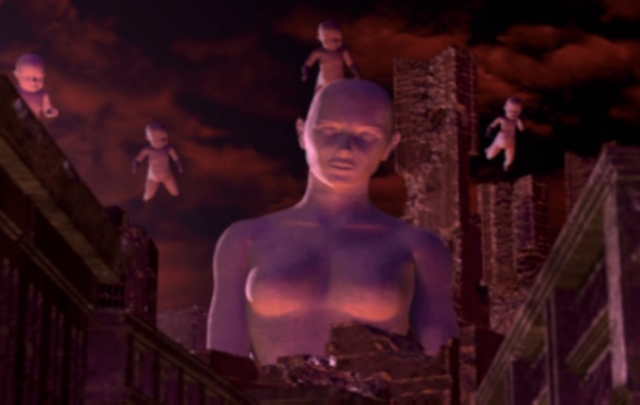
The Giant/Queen-beast, from which the maso originates.
‘Maso’ is a substance that originated in the ending of Drakengard that served as the impetus for Nier and (subsequently) NieR: Automata. Very roughly, in Ending E of Drakengard, the protagonists confront and destroy an otherworldly “Giant” (also known as the Queen-beast) that subsequently releases maso, an otherworldly, “multidimensional” particle. The maso induces ‘White Chlorination Syndrome’ (‘WCS), a disease that forces a choice on humans: either form a pact to become the servant of a god from another world, or perish by turning into a statue made of salt. Humans are able to avoid this disease by using maso to develop “multidimensional technology” that separates their souls from their bodies until a time at which WCS has died off, at which point humans would reunite their souls with their bodies (this plan of defense against the disease was called ‘Project Gestalt’ and was central to the plot of Nier). However, the soulless bodies preserved for humans—entities called ‘Replicants’—ended up developing “a sense of self” (i.e. sentience). This advent of self-awareness in Replicants led to a corresponding loss of sentience in the separated souls of humans, called ‘Gestalts’—this loss of sentience was known as ‘relapsing’ and caused the Gestalts to turn into aggressive, animalistic creatures (known to Replicants as ‘shades’).
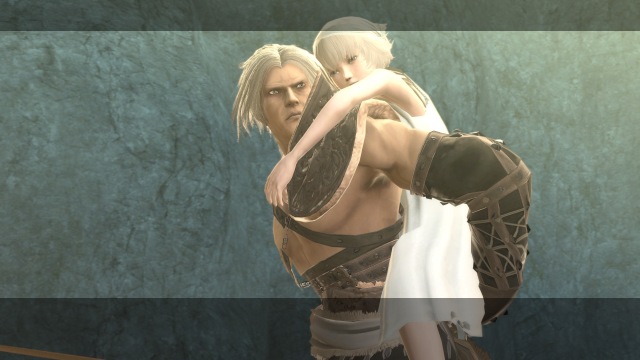
Replicant Nier and his daughter, Replicant Yonah.
The protagonist and avatar of Nier—technically named by the player, but called ‘Nier’ for convenience—is the Replicant corresponding to “the Original” Gestalt, someone whose data was central to the development and sustainability of Project Gestalt. The story of Nier (again, very roughly) follows Nier’s struggle to save his daughter—also a Replicant—from “the Shadowlord”—an entity that Nier sees as an enemy, but who is actually his own Gestalt (“the Original”) trying to reclaim his daughter’s Replicant. When Nier kills his Gestalt, he effectively derails Project Gestalt, which leads to the eventual extinction of humanity.

Replicant Nier killing the Shadowlord, his own Gestalt.
That’s a far-too-condensed reconstruction of what I take to be the key and relatively uncontroversial elements of the narrative than begins with Ending E of Drakengard and proceeds through the conclusion of Nier. The key points to notice for my purposes are: (1) maso is a multidimensional substance that binds humans to gods from other worlds, (2) the avatar of Nier is the Replicant that corresponds to Project Gestalt’s Original, and (3) sentience is more-or-less zero sum between a given Gestalt-Replicant pair: if the Replicant gains it, then the Gestalt starts down the road to losing it (and metaphysically, this seems reasonable: if a Gestalt-Replicant pair is supposed to be just one conscious entity, split into body and soul, presumably it would be able to sustain just one consciousness).
I think that, merely from the fairly uncontroversial facts I’ve highlighted about the story, a surprising but intuitive thesis about the source of sentience in Nier presents itself: namely, the player of the game is the source of sentience in Nier (the avatar) and other Replicants. Notice again that maso, according to Drakengard, is a substance that straddles dimensions and binds people to the gods of other worlds. It seems appropriate and explanatorily powerful to say that, as an avatar, Nier—again, the Replicant corresponding to the Original—is importantly bound to the player of the game, an extra-dimensional entity that determines Nier’s actions and choices throughout the game’s story. Given that we know maso renders humans the servants of gods, and Gestalt technology is derived from maso, we can explain Nier’s sentience by saying that he inherits it from the extra-dimensional entity to which he is bound: a sentient, human player.[3]
A potential objection: what about the fact that other Replicants gain sentience in Nier? These other Replicants are clearly not avatars, and so it can’t be the case that sentience in Nier is categorically derived from the player’s sentience.
My response: recall that Nier’s Gestalt has the special status of being “the Original” in Project Gestalt. To my knowledge, this status is never given a full and precise explanation, except to say that this Gestalt uniquely makes Project Gestalt possible, and that Project Gestalt is irreparably derailed when Nier kills his Gestalt. Given this special priority that Nier and his Gestalt have in the efficacy and progress of Project Gestalt, it strikes me as plausible to suppose that Nier’s sentience would play a causally decisive role in the emergent sentience of other Replicants. That is to say, Nier’s status as the Original’s Replicant makes it the case that his acquired sentience—which, again, he inherits from the player—subsequently induces sentience in other Replicants. So, even while the other Replicants don’t directly inherit sentience from the player, their sentience is still derived from the player, given the causally decisive role of Nier’s sentience.
Another potential objection: the player of a video game is a real person, not a fictional entity. So they simply couldn’t be part of the game’s narrative: real things can’t causally interact with fictional things in that way (e.g., I, a real person, can’t stop Tom Sawyer from painting a fence in the fiction of Mark Twain).
My reply: no doubt this is true, but fictions give real people fictional roles to play all the time. Think, for example, of second-person novels, which put the reader in the fictional role of whomever the narrative is addressing. And even though it might seem unintuitive or metaphysically unhappy to say that the player, from “another dimension,” is influencing the actions of Nier in his dimension, recall that the narrative already allows for this kind of influence even prior to my interpretation: again, WCS induces pacts between humans and gods from other worlds. So my analysis is metaphysically of a piece with the rest of Nier’s narrative.
I think my analysis is illuminating here because it links the rise of sentience in Replicants to Project Gestalt’s origins in maso; it also gives explanatory and metaphysical force to Nier’s status as an avatar (that is to say, Nier is an avatar because his maso-derived connection to the player allows the player to determine his actions). The analysis also strikes me as better than saying that Replicants “simply became sentient,” because, by linking sentience in Nier to the human playing the game, we are able to identify the sentience of Replicants as derived from a real source of sentience (i.e. an actual human).
So much for the good reasons to accept the player as the ground of sentience in Nier; the question now is, can we extend this metaphysical account of sentience to the world of NieR: Automata? Yes, but admittedly we can’t do it directly: given that YoRHa androids, machine lifeforms, and pods aren’t the direct products of Project Gestalt, we can’t simply say that maso technology allows the player to influence them all, and leave it at that. However, I think we can make an argument by inference-to-the-best-explanation that gives us good reason to believe that the metaphysical account we’ve given in Nier does extend to NieR: Automata; we’ll just have to invoke some data about machine cores and the player’s metaphysical relation to the game’s world.
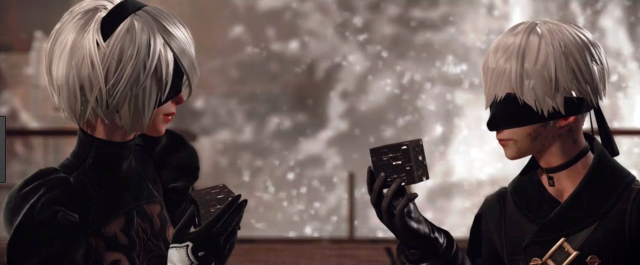
2B and 9S with their black boxes, fashioned from recycles machine cores.
First, machine cores. These are the central components of the machine lifeforms that the YoRHa androids in NieR: Automata battle without end; it’s also revealed late in the game that these cores are also recycled and used as “black boxes” to power YoRHa androids. There are two crucial upshots about these machine cores. The first upshot is that information archives provided in the game reveal that the cores are responsible for the structure of the consciousness of whatever entity they’re powering; we know this because the archives say that, in virtue of both machine lifeforms and YoRHa androids using machine cores, “it could be said that the consciousnesses of YoRHa units and machine lifeforms share the same structure.” The second upshot is that machine cores are well-suited to represent consciousness in entities that are designed to ultimately be destroyed. We know this because archives within the game report that “black boxes were installed [in androids] after determining that it would be inhumane to install standard AI in androids that are ultimately destined for disposal.” Given that YoRHa androids are apparently sentient, and their machine-core powered black box is responsible for the structure of the androids’ consciousness, it follows that we can understand what grounds sentience and humanity in NieR: Automata by understanding how machine cores are conducive to sentience and humanity.
Now, consider the question of what sort of metaphysical relation the player stands in to the world of Nier: Automata. What, in other words, does the player’s access to the game’s world amount to, within the fiction of the game? It seems to me that players have a fairly direct form of access to and influence on the game’s world. The game’s manifold endings exemplify this: the player’s choices are often able to determine not only the actions of their avatars, but also the desires and motivations of their avatars. For example, if the player directs 9S away from his initial mission helping 2B, the game ends with text saying: “9S was last heard to say: ‘I can’t control my curiosity about machines anymore. I’m leaving so I can study them as much as I want!’ He was never heard from again” (this is Ending G). Similarly, if the player has 2B kill the machines that putatively want to establish a peace treaty with Pascal’s village, the game ends with text saying: “In a sudden fit of temper, 2B wiped out the machine lifeforms, and no peace was born that day” (this is Ending J). This tight connection between the player’s choices and the mental states attributed by the game to the avatar androids suggests that the player does have some measure of influence over not just the androids’ actions, but over their psychology as well. Even more to the point, players can alter the very constitution of their avatar androids by changing the plug-in chips that determine their various characteristics, even going so far as to remove their OS chip if they wish. In other words, players seem to have deep and pervasive control over myriad constitutive features of their avatar androids’ identities.
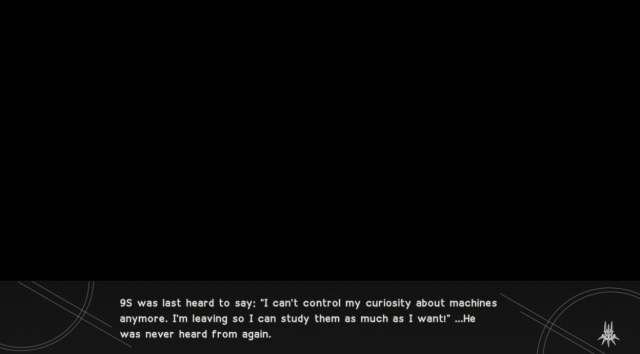
Ending G, in which the player directs 9S away from his mission supporting 2B.
In various ways, the activities of the pods that accompany avatar androids 9S, 2B, and A2 also suggest that the player enjoys a direct presence within the fiction of the game. In particular, notice that when the player uses her controls to change the “camera’s” perspective on the game, she doesn’t actually move some disembodied, third-person viewpoint: instead, as she moves the camera, the pod following her avatar moves accordingly, in such a way that the pod is always facing straight ahead from the player’s perspective. This establishes a sense in which the pod is directly connecting the player to the world of the game, thereby allowing the player to really be present within the world of the fiction rather than merely viewing the fiction from an external position in the real world.
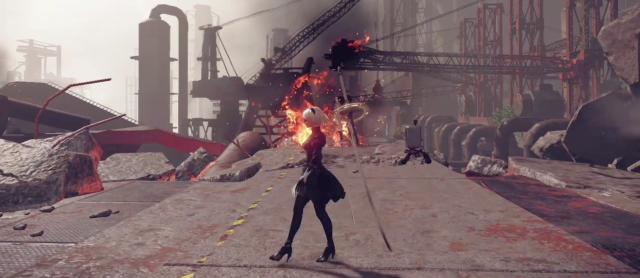
Notice that even as 2B faces orthogonally to the camera view, her pod matches the direction of the camera view.
Now we have on the table all the considerations needed to argue to the conclusion that the player is the metaphysical source of sentience in NieR: Automata. First, the consciousness manifested in YoRHa androids and machine lifeforms isn’t standard AI; given the context, which says that standard AI would have been inhumane for disposable androids, we can safely infer that the consciousness made possible by machine cores is somehow “less authentic,” “less genuine,” or less “sui generis” than “standard AI,” where “standard AI” probably means genuinely, intrinsically self-conscious AI of the sort that we still have yet to achieve in the real world. We also know that the player of NieR: Automata has apparently direct access to the game’s fictional world: the pods act as a direct means of access within the fiction by which the player can manipulate the world, and the player’s choices are reflected in the actions, psychology, and basic makeup of the androids; further, the iterative structure of androids’ existence—constantly dying, being re-instantiated, and recovering their old data—closely mirrors the player’s actions of guiding them through the game, failing, reconstituting the android, and recovering their data. Now, returning to my analysis of Nier and assuming that it’s correct, we also know that technology exists (namely, the maso technology of Project Gestalt) that allows humans from other dimensions to impart their sentience to otherwise non-sentient entities. Given that such technology already existed, I think we can infer that the best explanation of the sentience that emerges in androids and machine lifeforms is that, through the construction of black boxes from machine cores, androids were able to induce the same sort of relationship between android and player that previously existed between Nier and player. And, just as the player’s sentience proliferated throughout Replicants in Nier, so too was the player’s sentience diffused in NieR: Automata amongst beings with the relevant kind of technology—that is, beings with machine cores. This explains why both YoRHa androids and machine lifeforms are susceptible to becoming sentient.
What about the pods? It’s clear enough by the end of NieR: Automata’s Ending E that the pods are also at least on their way to sentience, if not fully sentient; yet there’s no evidence (so far as I know) that they’re also powered by machine cores. So how can my account explain their sentience, since they presumably wouldn’t be connected to the player’s sentience via machine cores? I think the answer here is straightforward. Recall that, on my account, pods act as conduits that directly connect the player to the world of the game. Given this direct relationship between the player and the pods, there isn’t any need to appeal to machine cores in explaining the pods’ emergent sentience: we can instead say that, since the pods already possess basic operational intelligence and they’re being used to directly transmit the player’s agency to the game’s world, it’s only natural that the pods could somehow “pick up on” or learn to emulate the consciousness of the player to whom they are intimately connected. This response is admittedly somewhat more vague than the analyses of sentience in androids and machine lifeforms, but this vagueness is a direct result of there being proportionately less information available about the structure and ontology of pods. Thus, I don’t think the additional vagueness in my account should speak against my analysis per se; we should instead just be disappointed that there isn’t more documentation about pods within the world of the game.
If my arguments in this section are right, then the sentience that emerges in Replicants, YoRHa androids, machine lifeforms, and pods are all deeply related in a surprising and informative way: all of them are derived, directly or indirectly, from the metaphysically foundational sentience of the video games’ player. As I emphasized at the outset, this Narrative-Grounds Analysis needn’t settle the most pressing questions of how to interpret the actual events of the games: my analysis, for example, needn’t bear on question of who the aliens are who brought the machine lifeforms to Earth, nor need it bear on the question of which of NieR: Automata’s endings is the “true” ending (if that’s even an intelligible question to begin with). What the analysis instead succeeds in doing is establishing a crucial link between the player of the Nier games and the content of those games: the player doesn’t just determine what the avatars do in those games—the player actually enables entities in those games to become sentient within the fiction, in a metaphysically robust sense.
3. Playing a Fictional Video Game
I think that the above analyses is the best account of the metaphysical foundation of sentience across both Nier and NieR: Automata; however, I think that NieR: Automata suggests a further, much more radical interpretation of the fiction’s metaphysics, one which invites us to reinterpret the precise significance of the player’s sentience and agency on the game’s world. I want to emphasize, however, that this further interpretation is both (1) much more speculative than the above analysis and (2) theoretically separable from the above analysis: that is to say, you can consistently endorse my above analysis while also rejecting the argument presented in this section. All the same, I would be remiss not to mention this more radical interpretation of the game’s world, because there is at least some evidence for it within the game and it allows us to conceptualize the game in an extremely unexpected, unorthodox, and challenging way.
The central thrust of this more controversial interpretation is that it is true within the fiction of Drakengard, Nier, and NieR: Automata that the world is nothing more than a data structure being manipulated by a human from the outside. In other words, put roughly, this interpretation claims that it’s true within the fiction of the video game that the world is nothing more than a video game. Just to be clear about how radical this thought is: our typical assumption with the fictional worlds of video games is that these worlds, within the context of the fiction, are real. For example, it doesn’t seem to be true within the fiction of The Legend of Zelda that the world is an interactive data structure; instead, it seems true within the fiction that there is a real world called Hyrule, in which Link really performs certain actions, quests, etc. The thesis I’m exploring in this section is claiming that it isn’t true within the fiction of Nier games that there is a “real world” in this sense: instead, within the context of the fiction, there is a computer-generated world with which a human player interacts.[4]
I see two central data in NieR: Automata that support the thesis that the fiction of the Nier games represents a pure data structure: the first datum is information about the overarching “network” that governs machine lifeforms in the game, and the second datum is the way in which the game’s content is generally represented to the player. I consider each datum in turn.
After the player completes Ending E of the game (assuming the player doesn’t delete her data—more on that in the next section), a “Machine Research Report” is added to her information archive. The report, written by Information Analysis Officer Jackass, details the network that governs the machine lifeforms, explaining how it was created and how it evolved into a “meta-network,” codenamed ‘N2’ (typically represented within the game as two Red Girls). It offers the following information about the machines, their network, and their meta-network.
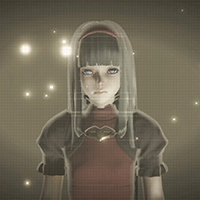
A representation of N2 as one of the Red Girls.
“Machine lifeforms are weapons created by the aliens. The only command given for their behavior was to ‘defeat the enemy’. However, it appears that their capacity for growth and evolution went too far, and they eventually turned on and killed their creators.
“At this point, machine lifeforms recognized that the goal of ‘defeating the enemy’ actually REQUIRED an enemy. In order to maintain this singular objective, they reached the contradictory conclusion that their current enemies—the androids—could not be annihilated completely, lest they no longer have an enemy to defeat.
“In order to resolve this inherent contradiction, the machine lifeforms began to intentionally cause deficiencies in their network, diversifying the vectors of evolution for all machines. This is the cause behind some of the more ‘special’ machine lifeforms, such as Pascal and the Forest King.
“Meanwhile, the deficient network began repeating a process of self-repair while incorporating surrounding information, until it finally reached a fixed state as a new form of network. Traces of information regarding human memories from the quantum server of the old model were discovered, indicating that it had integrated them during the final stages of its growth process. Said server contained a record of the discarded ‘Project Gestalt’, as well as information on the human who was the first successful example of the Gestalt process.
“Having acquired information regarding humanity, the network’s structure changed once more, becoming what might better be called a meta network (or a ‘concept’, to borrow the words of the machines). This led directly to the formation of the ego we identify as N2.
“…So then! To sum up: For hundreds of years, we’ve been fighting a network of machines with the ghost of humanity at its core. We’ve been living in a stupid ****ing world where we fight an endless war that we COULDN’T POSSIBLY LOSE, all for the sake of some Council of Humanity on the moon that doesn’t even exist.”
The obvious way to read this is to take it at face value: aliens created machines that killed them; these machines fought the androids; the machines ultimately learned about the real events of Project Gestalt and evolved, etc. But there’s another potential interpretation of this information available to us: suppose that aliens created a vast data structure, with “machine lifeform” programs that were governed by an overarching network with some sort of artificial intelligence. The network was designed with the purpose of “defeating enemies”; after generating and killing virtual representations of their creators, the only network-independent entities it knew, the network had to find a further, more sustainable way to fulfill its purpose. To this end, the network generated a virtual history of humanity and Project Gestalt within the data structure, along with the subsequent androids whose express purpose—protecting humanity—would necessarily put them into conflict with the machine lifeforms, thereby ensuring that the network would always be able to strive towards its purpose of defeating enemies. On such an interpretation, the worlds of Drakengard, Nier, and NieR: Automata are just the data structure generated by the machine’s network and meta-network: the network is the cause of those worlds, rather than just another element contained within those worlds.
Of course, the network and its machines couldn’t fulfill its purpose of defeating enemies simply by programming other entities to attack it: this would effectively constitute a fight against oneself, which is no real fight as such. So, the natural solution was to enable some external agency to control the androids and direct them to fight against the machines—and this external agency is what the player provides. The interesting, unintended consequence of the player’s introduction to this data structure—returning to the themes of the last section—is that the player’s sentience ends up “infecting” otherwise non-sentient computer programs with genuine sentience, which turns what was once a mere data structure with quasi-artificial intelligence into a virtual world that supports sentient virtual beings.
To reiterate, this interpretation is absolutely wild. Nevertheless, I think there’s enough evidence for it within the game to at least consider it as a seriously possible interpretation. Consider as further information about the machine network the monolithic Tower that emerges after the death of 2B—the Tower in which N2 resides, and in which A2 and 9S face each other. The purpose of this Tower is expressed by N2 directly to 9S, as he is losing consciousness during Ending D. It’s worth quoting what 9S learns from N2 about the Tower.

The Tower in NieR: Automata.
“This tower is a colossal cannon built to destroy the human server. Destroy the server… and rob the androids of their very foundation. That was the plan devised by [the Red Girls—i.e. N2].
“But they changed their mind. They saw us androids. They saw Adam. And Eve. They saw how we lived, considered the meaning of existence, and came to a different conclusion.
“This tower doesn’t fire artillery. It fires an ark. An ark containing memories of the foolish machine lifeforms. An ark that sends those memories to a new world.
“Perhaps they’ll never reach that world. Perhaps they’ll wander an empty sky for eternity. It’s all the same to the girls. For them, time is without end.”
In a similar way to the Machine Research Report above, we could interpret this in the obvious and literal way, but it seems like there’s another reading available that resonates with the radical interpretation we’re presently considering. On this alternative reading, the Tower is something like the central hub that generates the virtual world. Its libraries of “information” with various port numbers are actually libraries of functions to call to instantiate and run all the various virtual entities that constitute the network’s world; the network planned to fulfill its purpose (“defeat the enemy”) by annihilating its enemies (this is the discussion of the Tower as a “colossal cannon”), until the network realized it could better fulfill its purpose in perpetuity by using the input of a human to perpetually re-instantiate the network’s virtual world and enemies over and over again. Remember the fact that NieR: Automata has 26 endings? On the wild interpretation we’re currently considering, the multitude of endings is explained by being the networks’ way of prompting players to “send the memories” of the virtual world’s entities in the game to “a new world”—that is, a new possible outcome of the game. By constantly replaying and exploring all of the possibilities of the game, the player allows the network and its machines to infinitely strive to fulfill their purpose of defeating the enemy. In this way, the very structure of the game reinforces the idea that the machine network generated a virtual world for the player to engage in order to fulfill the network’s purpose of “defeating the enemy.”
As I mentioned earlier, the way in which the game presents its fictional content to the player further reinforces this wild theory that its world is just a data structure. The loading screens in the game present presumably in-game data about the various vitals and systems pertaining to whichever android is serving as the player’s avatar; pods are able to use the loading screen as a communication interface, further implying its in-game status as some sort of abstract data structure; the entire world as presented to the player will sometimes appear to “glitch” when all is not right with their android’s sensory systems, even though the world is not presented to the player through the android’s visual field; and the omnipresence of the virtual “data space” in which 9S can hack—appearing everywhere from in machine lifeforms, to the minds of androids, to locks, to seals on the Tower, further suggests that the world could foundationally be just a virtual data structure. Taken individually, each of these data could be furnished with an alternative explanation; yet taken holistically, together with the previous considerations about the origin of the network, it seems at least possible to seriously consider that the world of the game is itself nothing more than a video game generated by the machine network.
This analysis of the game’s metaphysics is of course controversial, and I’m not at all as confident in it as I am in the previous section’s conclusions about the player as the metaphysical basis for sentience in the fiction. Yet the analysis has distinctive merits. NieR: Automata is a game that is obsessed with the formal elements of video games: machine lifeforms are designed with the purpose of defeating enemies (in other words, they are meant to be enemies to the avatar), and avatars—the YoRHa androids—are designed with the purpose of defending humanity (in other words, they serve humanity while also being directed by the inputs of an actual human player). This metaphysical analysis explains these parallels between narrative form and content by saying that the game’s fictional world just is the virtual world of a video game, and its constituent characters are designed accordingly. It also captures the narrative significance of the wide array of endings that the game has: whereas we would otherwise presumably have to admit that there’s no intrinsic narrative reason why the game has so many possible endings (we might instead simply say something like “the developers thought it would be more entertaining,” which doesn’t seem as satisfying an explanation), we can instead say on this account that the machine network constructed the world in this way in order to keep the player coming back and thereby sustaining the network’s purpose. So, although this section is not intended as a staunch defense of this interpretation of the game’s world, it is an invitation to take seriously the idea that NieR: Automata’s universe might really be what it most immediately appears to be: a video game.
4. The Ethics of Being a Sentience-Source
Suppose you find my above arguments convincing. You might still feel the urge to ask: “So what?” After all, I was very clear at the outset of this paper that analyses of a narrative’s metaphysical foundation needn’t have any direct bearing on how we interpret the events of that narrative. If that’s true, then why should we even bother with NG Analysis?
Well, in the first place, I should hope it’s apparent by now that NG Analysis does have implications for how we understand a video game and its fiction, even if it doesn’t directly bear on events in the game. I imagine, for instance, that we might feel different playing through NieR: Automata and thinking that its fictional world is fictionally just a data structure, versus playing through the same game and thinking its fictional world should be understood as fictionally real in the same way that our actual world is understood as real. Or consider how different the series of games would be if sentience arose intrinsically from Replicants, androids, and machine lifeforms, rather than arising derivatively from the sentience of the player. On that alternative understanding of the games’ metaphysics, the games would be presenting a world in which sentience can naturally arise out of programmed machines. In contrast, that isn’t the case on my interpretation: because the sentience of all these entities is ultimately grounded in the player’s sentience, machines only end up being sentient because the sentience of a naturally sentient lifeform (the human player) is shared with the machine. I take it that a fictional world in which intrinsically sentient machines are possible is crucially different from a fictional world in which such machines are not possible.
But suppose now for the sake of argument that the above considerations don’t move you. I want to close by considering one other way in which the analysis of NieR: Automata’s metaphysics deeply matters: namely, it determines the ethical commitments that the player has within the game to androids, pods, machine lifeforms, and other players.
If a given entity is sentient, then we typically think that the entity has moral rights—that is, there are morally permissible and morally impermissible ways for a moral agent (like a human) to treat that entity. Because androids, machine lifeforms, and (eventually) pods are sentient within the fiction of NieR: Automata, that means that, fictionally, there are right and wrong ways to treat them. These entities of course don’t have real moral rights because it isn’t the case that the programs representing them in the video game are literally capable of robust artificial intelligence, but when we engage in the fiction, it stand to reason that we must treat them as fictional entities with moral rights because of their fictional sentience. But notice that, based on your preferred metaphysics of sentience in the game, the sense in which these entities have moral rights will differ accordingly. If you think that these entities naturally became sentient independently of the player’s sentience, then they will have fictional moral rights regardless of whether the player interacts with the fictional world or not. On the other hand, if you agree with me that the sentience of these entities fundamentally depends on the sentience of the player, then it follows that these entities only have moral rights so long as the player interacts with the game’s world and thereby renders them sentient.
Why should these ethical considerations be any more compelling a case for the value of NG Analysis than the earlier considerations were? Because, it turns out, these ethical considerations will determine what choice you should make at a crucial juncture in the game’s narrative.
In Ending E of NieR: Automata, Project YoRHa enters its final phase: destruction of all androids and deletion of all data. Pods 153 and 042, together with the player, decide to recover the data of 9S, 2B, and A2 (the avatar androids)—thereby preserving the player’s data and allowing the player to continue exploring the game’s world and possibilities. In order to recover the androids’ data, however, the player must complete an exceedingly challenging mini-game in which she pilots a digital ship that destroys all the names in the game’s credits, all while avoiding myriad projectiles that the names are firing at the ship.
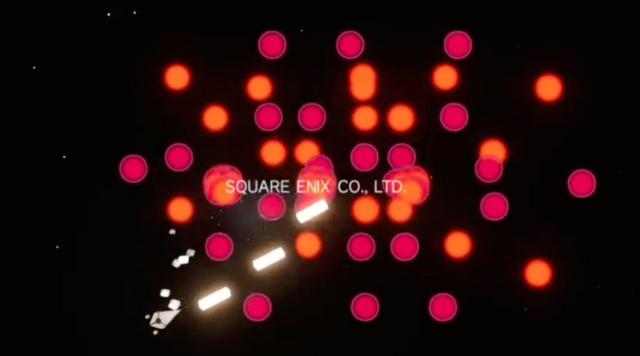
The credits-based mini-game in Ending E. Getting hit by three projectiles total is fatal.
It’s very difficult to complete this mission alone; however, after failing several times (assuming the player is connected to the online network of other players), the player will receive a “rescue offer” from other players. If the player accepts, then the ships of other players will join the player’s ship, making the mission extremely easy; however, every time a projectile connects with the pack of ships, another player’s data (not the original player’s) is lost. Once the player completes the mission, the androids’ data is successfully restored, and the pods offer the player an option: if she so chooses, the player can sacrifice her own data in order to help another player reach this ending, just as she was (presumably) helped in reaching the ending. At the price of the save data and records you have accumulated in the game, you can help another player—a perfect stranger.[5] Here’s the crucial ethical choice: do you agree to help the other player or not?
If you have the view that androids, and machine lifeforms, and pods are fictionally sentient independent of you, the player, then, within the context of the fiction, these entities have moral rights against you no matter what. Given that choosing to delete your save data plausibly entails more-or-less “erasing” these entities, it stands to reason that such a view would forbid you from deleting your save data: to do so would be to help a stranger at the cost of annihilating countless sentient beings. In contrast, if you have the view that the fictional sentience of these entities fundamentally depends on the sentience of the player, then it follows that, were you to withdraw yourself from that fiction—for instance, by deleting your save data—then these entities wouldn’t be fictionally sentient anymore, and thus wouldn’t have fictional moral rights against you. On such a view, helping a stranger would not transgress against the moral rights of anyone, since, upon deleting your save data, the androids, machine lifeforms, and pods would lose their foundational connection to your sentience, from which their own sentience derived. Since, other things being equal, you probably ought to help the stranger since you were probably helped by strangers in successfully reaching Ending E, it follows on this view that you ought to delete your save data. So your view of the metaphysics of sentience in Nier: Automata could end up determining what you morally ought to do within the fiction when presented with this choice at the end of Ending E. If you think that your choices as a player within a video game matter at all, then this means you can’t afford to overlook the metaphysical foundation of NieR: Automata.
Conclusion
Nier: Automata, as I said at the outset, is a philosophically rich game across a wide variety of dimensions. I’ve only aimed in this paper to analyze the most foundational of those dimensions: the metaphysics of the game’s fiction. But those metaphysics, we’ve seen, are quite illuminating with respect to the rest of the game: they afford the player a central role as the wellspring of sentience in the game’s world, and they suggest new ways of grounding the self-consciously “video-game” aspects of the game’s narrative. These metaphysics may well be part of why the game’s exploration of sentience and the meaning of being human is so compelling: even as machines and androids wrestle with these concepts, the sentience they are trying to understand is ultimately your very own sentience; the humanity they want to know is your humanity. The human in NieR: Automata, therefore, is the one behind the controller.
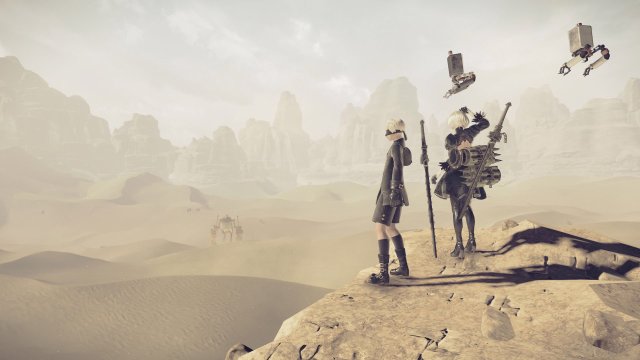
[1] Obviously, these are both toy examples, and it isn’t obvious that either of them is the correct account of Link’s time-traveling abilities.
[2] I say my work “doesn’t necessarily” pose a threat to that theory because there surely may be specific cases and ways in which an account of a narrative’s fictional grounds might restrict the set of possible interpretations of that narrative’s events. My point is simply that there is no a priori, categorical entailment relation between theories of a narrative’s fictional grounds (NG Analyses) and theories of the meaning of that narrative’s events (NE Analyses).
[3] In precisely what sense does Nier “serve” the player? An easy response would be to say that the player “controls” Nier in just the way that the literal control mechanics of the game suggest. If you’ve read my recent work on the foundations of video game storytelling, then you know I don’t think it’s right to say that players control avatars in that way; however, on my view, the explanation would simply be that the player already occupies a fictional role in the grounding of the game’s narrative, and Nier simply embellishes that fictional role by identifying it as a human, extra-dimensional entity controlling Nier. All of which is to say: my preferred view of video game metaphysics supports the interpretation of Nier that I offer here, but one needn’t subscribe to my broader video-game metaphysics in order to endorse this interpretation of Nier.
[4] While the interpretation I’m considering here is radical, it’s not without precedent: my most recent work on Xenoblade Chronicles defends the view that its universe (or, at least, the main universe within the game) is best understood to fictionally be a computer-generated world with external input from a player.
[5] There are of course ways to avoid the hard choice here by, for example, backing up your save data on an external source that the game can’t delete. I’m ignoring such methods on the grounds that they are illegitimate responses to the choice within the context of the fiction.
A New Theory of Video Games
With a Terrible Fate has been quieter than usual lately because, for the past few months, I have been working on a thesis to fulfill part of the requirements for my degree in philosophy. I am now pleased to say that this project is complete, and the result is a new theory of the ontology and metaphysics of video games. The theory comes with some surprising results—for instance, I don’t think there’s any deep sense in which the players of video games actually control or embody avatars.
Thank you to all those who have found this site and engaged me in conversation about video games, whether online or in person. Those conversations are a huge part of how my thinking on video games has evolved over the years. And, now that this project is complete, stay tuned for more new work coming soon (I heard, for instance, that a new Zelda game and Nier game might have been released recently?).
You can read the full thesis here.
Meet With a Terrible Fate at PAX East 2017.
With a Terrible Fate is thrilled to publicly announce that we will be presenting a panel at PAX East 2017, and we want to see all of our Boston followers there.
On Sunday, March 12, at 1:30pm at the Bumblebee Theatre, check out With a Terrible Fate‘s “Stranger than Fiction: The Real Science of Sci-Fi Games.” We’ll explore how applying real scientific theories and studies to science-fiction video games allow us to more precisely understand their worlds, stories, and relation to us as players.
 Featured Author and neuroscientist Matt McGill will be on the scene to talk about SOMA. Using cutting-edge neuroscientific findings, he will discuss the various
Featured Author and neuroscientist Matt McGill will be on the scene to talk about SOMA. Using cutting-edge neuroscientific findings, he will discuss the various
aspects of SOMA‘s wild world and suggest that it is far closer to reality than you might first reality. He’ll even go beyond the descriptive to the normative: if it turns out we really can do the sorts of things that happen in SOMA, does it follow that we should? If you want to preview the material he’ll be discussing, you can check it out here.
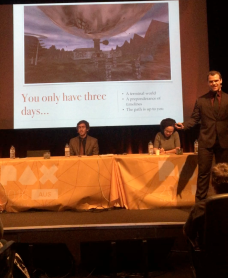 Afterwards, I’ll discuss the quantum physics and philosophy of science that underpin the story of BioShock Infinite. I’ll argue that we can use these real theories to make better sense of the game, uncovering a new interpretation that makes better sense of the most famously confusing aspects of the game. Once we see this new interpretation, we’ll be poised to step back from BioShock and see a new, surprising way of analyzing video games more generally. You can preview the work I’ll be discussing here.
Afterwards, I’ll discuss the quantum physics and philosophy of science that underpin the story of BioShock Infinite. I’ll argue that we can use these real theories to make better sense of the game, uncovering a new interpretation that makes better sense of the most famously confusing aspects of the game. Once we see this new interpretation, we’ll be poised to step back from BioShock and see a new, surprising way of analyzing video games more generally. You can preview the work I’ll be discussing here.
We’re excited to see you, Boston. With a Terrible Fate began here, and we owe a lot to the people in the area who’ve been keeping up with us since the Dawn of our First Day. So come meet us; explore games, science, and philosophy with us; ask us plenty of questions; and, as always, stay tuned for new content.
The Tragic Irony of Final Fantasy XIII-2
Since the beginning of With a Terrible Fate, I’ve made passing comments about how deeply the storytelling of the Final Fantasy XIII trilogy offended my sensibilities, both as a player and analyst of video games. On the first day of my three months analyzing Majora’s Mask, I discussed the Zelda game’s value by showing how it succeeded where Lightning Returns failed; when I discussed my fears about Square Enix dividing the Final Fantasy VII remake into multiple games, I cited the weak episodic storytelling of the XIII saga as prima facie reasons to worry about Square’s ability to tell one story across multiple games. Yet despite constantly using the XIII trilogy as fodder for broader critiques, I have never yet devoted an article to tackling the problems of the series head-on.
Well, with today at last marking the release of Final Fantasy XV, I found it a fitting occasion to turn my full attention to Final Fantasy XIII, as something of a personal reflection on why I was so let down by the trilogy. I do view the trilogy as a fantastic failure in storytelling, but the undertone of this critique is the quiet hope that Square learned its lesson and remembered how to tell stories. This, I think, is the core issue to keep in mind as FFXV finally enters the universe of game criticism in the coming weeks: remember that FFXIII also “looked pretty” and had a decent enough battle system; its colossal failure was one of storytelling, and I believe that storytelling is the measure by which FFXV will stand as a masterpiece or fall as an epic waste of time and resources.
Sadly, I could probably spend as long picking apart the FFXIII trilogy’s problems as I spent analyzing Majora’s Mask (but don’t challenge me on that–it wouldn’t be fun for anyone). So today, I’m just going to focus on Final Fantasy XIII-2. I’ve long thought that, of the three games in the trilogy, FFXIII-2 was the one with the most redeeming features and the greatest narrative potential. The problem is that FFXIII-2 is, in a surprising and sad sense, a very poignant story trapped inside of a very poorly composed story. The project of this article is to explain what I mean by that claim; in particular, I want to show you how the very structure of Final Fantasy XIII-2’s universe renders its narrative shortcomings tragically ironic, perhaps even in a way that can give disappointed players a new appreciation for a game that fails in an almost beautiful way. I’ll first argue that, sacrilegious though it may sound to say so, FFXIII-2 was poised to be the spiritual successor of the classic Chrono Trigger. After that, I’ll show how the overall framing of FFXIII-2‘s story destroyed what initial potential the game had–in fact, I’ll argue that it suffers from failures similar to those of Assassin’s Creed III, but suffers from those failures to an even greater extent than ACIII does. Lastly, I’ll combine these two strands of analysis to show how the game becomes a tragically ironic narrative failure. In the end, we’ll walk away with some lessons in how stories can fail–and, hopefully, how stories can succeed.
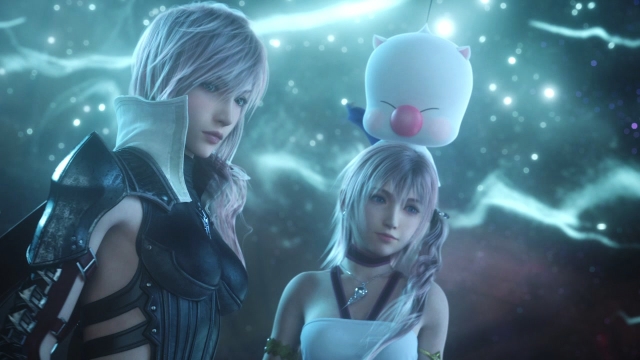
I’m still waiting for a justification of why this Moogle was so crucial to the plot of XIII-2.
Not a Hallway Anymore: Temporal Overworlds
One of the most common criticisms of the first entry in the FFXIII trilogy–named simply Final Fantasy XIII–was that its world and story were overly linear, meaning that the game consisted in a singular path from the beginning to the end of its narrative with very little by way of exploration or divergence from that path. One of JonTron’s most popular video’s, criticizing precisely this aspect of the game, bore the fitting title “Final Hallway XIII” in reference to the game’s severe linearity. So, you might expect that the developers, in crafting a sequel to FFXIII, might compensate for this aspect of the original game by making the sequel substantially less linear, with a variety of different paths and narrative outcomes to explore.
And indeed, less linearity is exactly what we see in FFXIII-2; in fact, the structure of the game’s world and narrative is radically non-linear. What I mean by ‘radically non-linear’ is that, where the worlds of most games tend to be spatially organized, the world of FFXIII-2, at its highest level, is actually structured in terms of time. The player’s main interface with the game is the Historia Crux, a metaphysical space that allows them to access various moments across time–some of which occur in alternate timelines. The Historia Crux is analogous to the ‘world map’, or ‘overworld’, of many other games: the global space that contains all of the various locations to which the player can travel over the course of a game’s narrative. Yet instead of being a broad swath of space, the Historia Crux is a broad swath of time: we could justly call it a temporal overworld in the sense that it fundamentally structures the game’s narrative and locations based on time rather than on space.
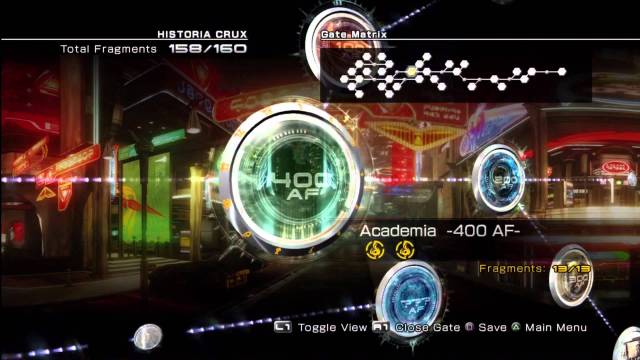
The Historia Crux matrix of gates to locations throughout time and timelines.
One might even say that the story of FFXIII is about linearity and non-linearity in narrative. The Historia Crux is made possible by a variety of paradoxes that corrupt time with impossible events following the end of FFXIII‘s narrative, when the goddess Etro intervened to save the player’s party of characters, thereby distorting the flow of history. One way of viewing the goal of FFXIII-2, then, is to travel through time resolving these paradoxes, trying to restore order to the timeline. One might actually see this as a clever response on the part of Square to the linearity criticisms about FFXIII: by resolving paradoxes in FFXIII-2, the player is able to travel to a variety of potential timelines and witness several paradoxical outcomes to the game’s history–yet all of this is done in service of restoring order and linearity to the storyline, ultimately reaching the game’s singular, canonical ending. It’s easy to interpret this as a metaphor for the tension in games between the need for games to present multiple possibilities on the one hand, and the need for games to tell a coherent story on the other hand: for players’ choices to matter in game narrative, multiple outcomes to events must be possible, and yet this increasing variability in the game seems to cut against the grain of a well-articulated story with fixed, carefully arranged events.
So far, so interesting. While I haven’t yet said much at all about the particular content of FFXIII-2‘s story, the form of its world certainly seems like an interesting basis for telling a tale that plays on the special features and constraints of video games as a medium. And it’s worth noting at this juncture that this isn’t a radically new idea: in fact, it picks up on some of the central mechanics and themes of a much older game of Square’s: Chrono Trigger.
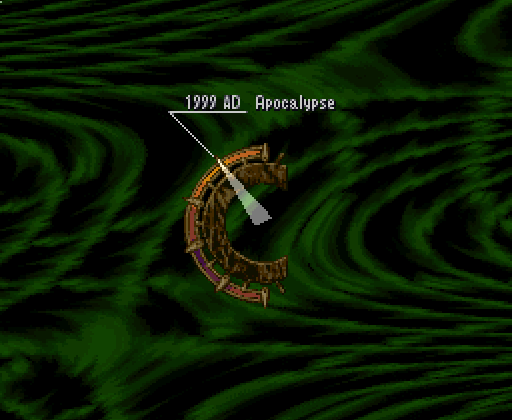
The Epoch’s time-traveling interface in Chrono Trigger.
Though it wasn’t structured around paradoxes, Chrono Trigger did gain fame for its time-travel narrative structure, complete with a wide variety of potential game outcomes depending on choices the player made, when the game’s ultimate enemy (Lavos) was defeated, and so on. Released in 1995, the game was ahead of its time–no pun intended–in the way it built a robust game narrative out of multiple possibilities and timelines for the player to explore. This is the tradition in which FFXIII-2 followed; you can even see echoes of the time-hopping interface of Chrono Trigger’s time machine, the Epoch, in the design of the Historia Crux.
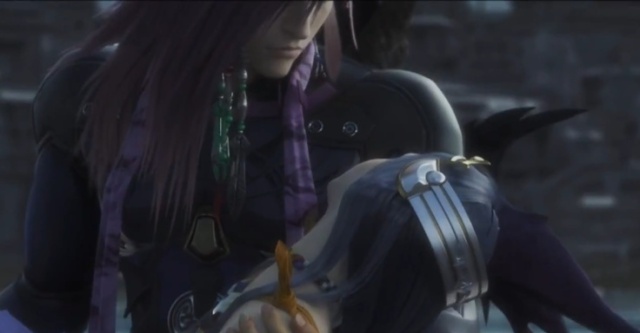
Caius with one of many ill-fated Yeuls.
But FFXIII-2 goes beyond merely elaborating the structure of Chrono Trigger: in the details of its story–or rather, one of its storylines–it makes the game’s time-based narrative deeply poignant in a surprising way. The central antagonist of the game is Caius Ballad, a man who has been made immortal by being endowed with the heart of the goddess Etro–the Heart of Chaos. He is the designated guardian of Yeul, a Seeress with a double-edged gift: the young girl can see the future, but her lifespan shortens each time she does so, causing her to die young, only to be reincarnated thereafter. Thus the immortal Caius, knowledgeable of all time thanks to Yeul’s visions, has also had to watch countless Yeul’s die in his arms, “carving their pain on his heart” every time. Caius’ mission in the game is to kill the goddess Etro, from which time and history flow, in order to end time itself: he only wants to do this in order to end Yeul’s suffering by putting a stop to the cycle of her dying by degrees every time she sees the future.
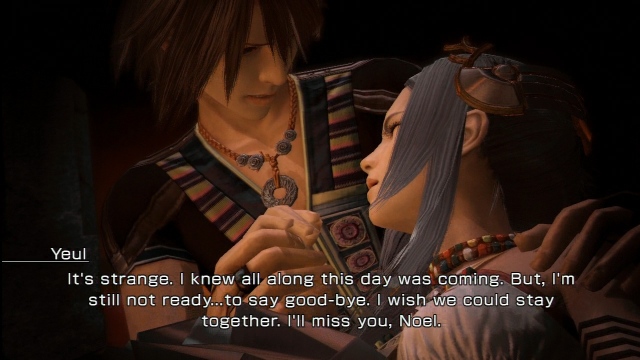
Noel and a dying Yeul.
On the other hand, we have the protagonist Noel: one of the player’s two characters, who gets wrapped up in a quest to change the future and resolve the timeline. Growing up, he knew both Caius and one incarnation of Yeul; he refused to become Yeul’s guardian when he learned that he had to kill Caius in order to do so. As he travels throughout time, he clashes with Caius and meets numerous other incarnations of Yeul; thus he comes to understand both the fate of Yeul and the pain endured by Caius as Yeul’s companion and protector. In the game’s final battle, Noel confronts Caius and challenges his views about Yeul: though Caius believes Yeul to have been cursed by Etro to die and be reborn countless times, always living a short life, Noel tells Caius that he knows Yeul wanted to come back because she loved Caius and wanted to be with him, time and again.
The closer you look at the story of Noel, Caius, and Yeul in relation to the overall architecture of FFXIII-2‘s narrative and world, the more poignant the story becomes. The very act of the player and Noel progressing through the story and constantly changing the future causes Yeul to have more visions, thereby shortening her life and killing her more quickly; Caius, the game’s final villain, wants Noel to be strong enough to kill him so that, by Caius dying, Etro will die too (since his heart is her heart) and Yeul will be free from seeing history. And as Noel continues in his journey, he comes to understand both Caius and Yeul, all the while unknowingly unwinding the coil of fate to the point where he is strong enough to kill Caius, and Caius forces him to do so. And on top of all this, perhaps most impressively, this narrative perfectly mirrors the act of playing the game: as the player explores and exhausts all the game’s narrative possibilities, she becomes more invested in and knowledgeable about the characters, all the while progressing the story to the point where the game reaches its conclusion, effectively ending the timeline of the game’s world and terminating the player’s interaction with the various timelines. This is a story shockingly rich with layered conceptions of time, sympathy, pathos, and the tension between possibility and fate.
I started out this article by claiming that FFXIII-2 was a game with tragically ironic narrative shortcomings, but thus far I seem to have been describing an incisive, acutely self-aware game with a moving narrative. So where’s the problem? Well, you might have noticed that I said above that Noel is one of the player’s two characters–and it’s the other one of these characters that makes trouble for the game.
Tragedy and Time
In a nutshell, the problem for Final Fantasy XIII-2 is that the story I just related to you above is relegated to the status of a sub-plot: Noel and his cohort are effectively supporting characters in service of the player’s other controllable character, Serah Farron. The game is principally conveyed through her perspective, and her goal–the primary impetus for the game’s overall narrative–is to effectively undo the world and story of Noel, Yeul, and Caius.
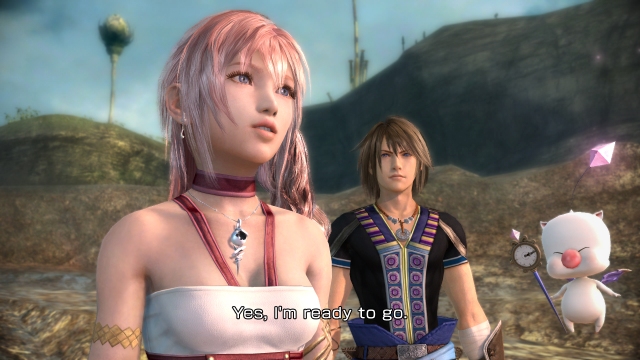
Note here that Noel is backgrounded relative to Serah and Mog the Moogle, and that Serah is the one deciding that the party is ready to go. In these respects, this picture symbolizes pretty much every aspect of the problems I’m pointing out for the game.
Serah is the sister of Lightning, who was a major character in FFXIII and the primary protagonist (and only player character) of Lightning Returns, the last entry in the trilogy. She is engaged to Snow, another key character from the first game that gets downgraded to little more than “Serah’s fiancée” in FFXIII-2 and Lightning Returns. The overarching narrative of FFXIII-2 is that, as the time paradoxes began (following the events of FFXIII), Lightning was effectively erased from history, trapped in Valhalla, the realm where the goddess Etro dwells beyond time. Serah is the only one who remembers Lightning’s presence after the events of XIII-2, due to the paradoxes; Lightning, from Valhalla, sends Noel to join Serah on a journey to fix time, along with Mog, a Moogle who guides Noel and Serah through the world and time.
Personally, Serah doesn’t strike me as a very interesting character–she seems to, for most of the game, have a generally bad time in the style of Sandra Bullock in Gravity, and to be generally two-dimensional besides this–but it’s not especially insightful to critique a character by saying tit isn’t one’s personal cup of tea. I think the more interesting problem with Serah is actually much deeper and harder to forgive than anything like her likability: the problem is that Serah’s epistemic perspective is directed outside of the game’s universe. The entire thrust of Serah’s storyline is that she remembers her sister when no one else does, and wants to restore time to the way she remembers it; in other words, she remembers the events of Final Fantasy XIII, and is trying to reestablish them in a world that is radically different. (Note, as an aside, that this is one of the reasons why it’s so challenging to make sense of the series’ overall consistency: the very premise of time paradoxes in FFXIII-2 effectively undoes many narratively central elements of FFXIII, and similar anti-plot devices bridge the gap between FFXIII-2 and Lightning Returns.) So the primary objective of the game’s narrative, as presented through the lens of its focal character, Serah, is to undo the world of the game by changing history to reinstate the world of the previous game. So Serah’s narrative isn’t simply a “distraction” from Noel, Caius, and Yeul’s narrative: it actually actively disqualifies it as relevant, since that narrative constitutes part of the world that Serah is aiming to undo. Indeed, even when Serah is identified as a Seeress who, like Yeul, can see the future at the cost of her life, this fact that could potentially unify the two narratives seems nevertheless to be something that Serah’s narrative tries to overpower and disqualify: she decides to continue trying to change the future despite the fact that it may cost her life. Thus when Serah does die at the end of the game as a cost of her visions, the death doesn’t beautifully tie her story and fate together with Noel’s–rather, it just puts a final emphasis on the bizarre fact that the game you just played forced you to focus on a player who never wanted to be in the world of the game.
This problem is deep and inescapable because the narrative of FFXIII-2 virtually always focuses on events through Serah’s perspective. This is important to note because there are multiple ways in which games can intermingle good and bad narratives, and these ways bring about different effects in the overall narrative. It’s useful in this regard to contrast FFXIII-2 with the case of Assassin’s Creed III.
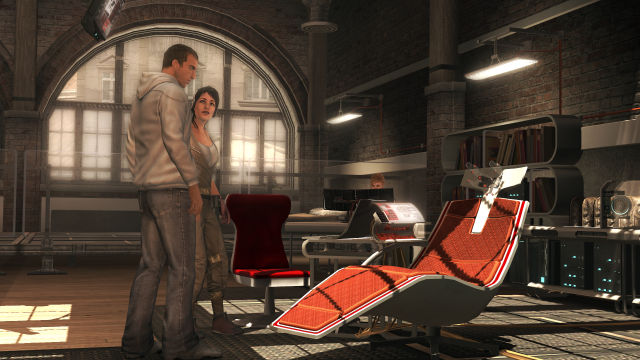
Desmond and the Animus of Assassin’s Creed.
Again, regulars to the site will know I’ve been harshly critical of ACIII in the past, mostly in virtue of what I see as a baseless use of an alien-like First Civilization dominating and confusing a narrative about Templars fighting with Assassins; I first detailed this in an article comparing the “aliens” of Assassin’s Creed to the “aliens” of Majora’s Mask. Roughly, my gripe against the game is that the imposition of the First Civilization discounts the value of any agency the player appeared to have within the world of the game, thereby undercutting the entire point of having played the game; this is especially clear when Desmond killed with little narrative justification or explanation at the end of ACIII. But it’s crucial in understanding ACIII to note that there are two layers to the narrative: we have Desmond working as an assassin in present time, and we also have him accessing and living out the memories of his ancestors in the past via the Animus. When engaged in the Animus, the broader storyline of Desmond, the First Civilization, etc., largely fade away: instead, we are left with a compelling narrative about a Native American ancestor, Ratonhnhaké:ton, taking part in the American Revolution, becoming an assassin, and undertaking a deeply personal quest for justice.
The key thing to notice about the above ACIII example is that the layered aspect of the narrative, with the Animus interface serving as a barrier between Desmond’s story and Connor’s story, allows us to effectively consider each narrative independently of the other, while still being able to consider them compositely if we so choose. Despite my qualms about the overall game and series, I quite enjoyed Ratonhnhaké:ton’s story in Assassin’s Creed, and the overall narrative structure allowed me to enjoy it without the overarching Desmond narrative severely impeding it. But this isn’t the case in FFXIII, because there is no Animus-like interface between Serah and Noel’s narratives: Serah is the player’s primary conduit to the entirety of the game’s world–the world she wants to undo. Even in the momentous final confrontation between Noel and Caius that I described above, we find Serah collapsed a few yards from them on the beach of Valhalla, being sad and generally having a bad time. We’re trapped in the perspective of someone who doesn’t belong or want to participate in the world in which we as players as participating, and that is the crux of FFXIII‘s failure.
Conclusion: A Tale of Tragic Irony
If you like irony, then there’s a silver lining for you in all this: even though the overall architecture of FFXIII-2 spoiled what could have been a moving and cerebral story, it does leave us with some tragic, dramatic irony in the way that Serah’s narrative interacts with the narrative of Noel, Caius and Yeul. Noel, Caius, and Yeul are deeply enmeshed in a universe rife with paradoxical possibilities and timelines, trying understand the best way to shape their world and each other as they grapple with the complex perspective and sympathies that come with witness life, death, and pain across countless generations and potential timelines; yet all of their struggles to understand and make meaning ultimately depend on the whim of a player whose actions are being filtered through the lens of a girl who has no intrinsic stake in the events or native inhabitants of the world in which she finds herself. This almost recalls classic Greek tragedy in how laughably ironic it is: as characters wrestle with their humanity and universe, their fate rests in the hands of someone whose priorities are entirely elsewhere–literally in a different game.
If there’s any larger takeaway here, I think it’s this: the worlds and metaphysics of video game worlds are integral to the stories of video games, and the characters of games oftentimes relate to the game’s world in different ways. If the characters have different stakes in the world, then the relations between those stakes, along with the weight given to each of those stakes, must be mindfully architected, or else the whole narrative could be thrown out of balance. And, although we might think it obvious, FFXIII-2 shows us how crucial it is that the principal avatar in a game is actually invested in the world of that game. After all, what incentive does a player have to act as an avatar that does not wish to participate in the game’s world?
But, with that, a new chapter is beginning. Here’s hoping that Square learned from its mistakes, and that Final Fantasy XV has a story worth telling. The only way to know for sure is to dive into its world and find out. Or, you could head back here in a few weeks and see what I think of it.
Or both. Both is good.
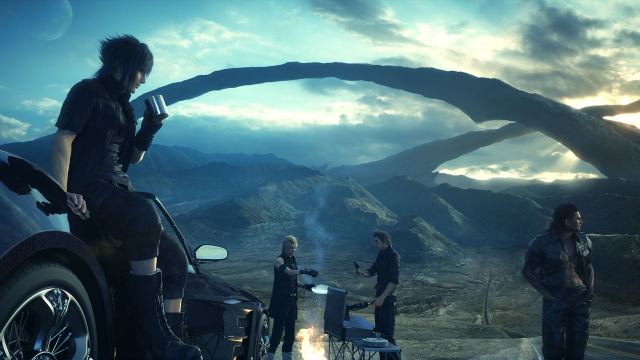
From PAX Aus: Horror in Majora’s Mask
With a Terrible Fate is in the process of releasing articles detailing the arguments of our presentation at PAX Australia 2016 on horror storytelling in video games. I’ve already released an article on the horror of Bloodborne, which I discussed at PAX; now, I’m returning to Majora’s Mask to discuss the metaphysical and metaethical details of the game that make it more horrifying than you might first think.
A word of background before we get started: before With a Terrible Fate became a central hub for rigorous video game analysis and theory, I began the site as a project in which I analyzed Majora’s Mask for three months leading up to the release of Majora’s Mask 3D, in an effort to defend my claim that Majora’s Mask is one of the most significant pieces of art in modern times. So, what I say here condenses various theses that I defend at length in that much larger body of work. If you’re interested in reading my comprehensive work on Majora’s Mask, you can find the entire library here. I’ll also link to articles from the library as they become relevant in this article.
With that in mind, let’s return to Termina and talk about what makes it far scarier than Creepypasta, fan videos, Gibdos, or nearly anything else. In keeping with the format of my PAX Aus presentation, I’ll first argue that there is no metaethical grounding for a hero’s quest in Termina. I’ll then turn to the iterative-timeline structure of Link’s journey through Termina, and argue that Termina cannot every truly be saved in the way the game suggests.
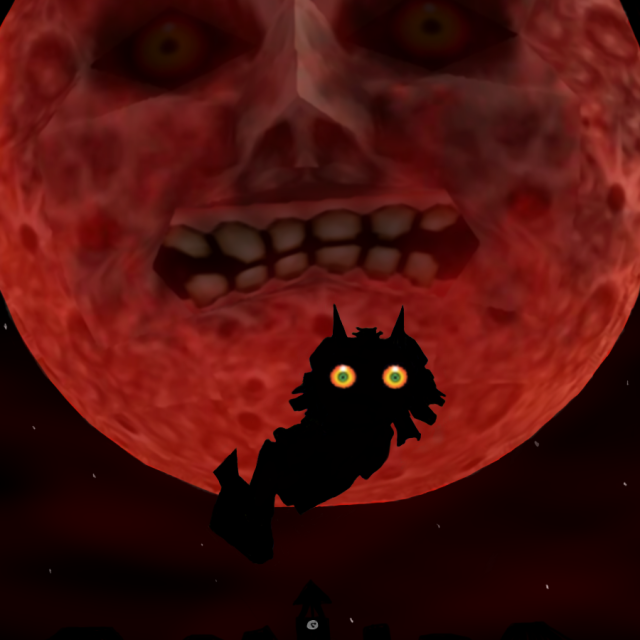
“Not In Hyrule Anymore”: The Lack of Ethical Grounding in Termina
It might not seem that there should be any question about whether Link is a hero in Majora’s Mask: after all, Legend of Zelda games are quintessential journeys of heroism, defeating evil against great odds. But I contend that special features of Termina deny that Link’s journey is truly good in the way that the journeys of other Links in other Zelda games are. To show this, I’ll first contrast the metaphysical foundation for morality in Hyrule with the lack of such foundation in Termina. I’ll then discuss the purpose of Link’s quest, and the degree to which morality within Termina is treated as a game. By the end of this section, we’ll see that players should be seriously doubtful that they can do anything good or heroic in Termina–and that should scare them. (You can read more about this in my early article on why Majora’s Mask should terrify you.)
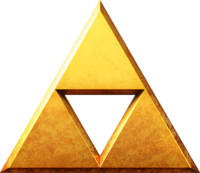
The Triforce.
Perhaps the most recognizable image from the Legend of Zelda series is the Triforce: a sacred object derived from the three Goddesses who created the world of Hyrule. Each of the three triangles represents a different virtue: Power, Wisdom, and Courage. These are the virtues that created the world and that ground its goodness, metaphysically. They are also traditionally represented by the individuals in whom one of the three virtues is manifested: typically Ganondorf (Power), Zelda (Wisdom), and Link (Courage). The harmony of these virtues grounds order in the world and safeguards against chaos.



The heroism of Zelda quests is almost categorically grounded in restoring order to the world by restoring balance to the Triforce. Consider, for instance, the story of Ocarina of Time: Link must take up his fated role as the Hero of Time and bearer of the Triforce of Courage by uniting with Zelda, bearer of the Triforce of Wisdom, in order to defeat Ganondorf, the “Great King of Evil,” thereby preventing him from taking over the world and throwing it into chaos. This is fairly typical of Zelda games: Link’s quest against evil is grounded in restoring order to the Triforce.
The first thing to notice about Majora’s Mask, then, is that there is no mention of the Triforce at all in the game. There is no mention of Link as bearer of the Triforce of Courage, nor is there any “Great King of Evil,” nor–despite this being a “Legend of Zelda” game–is Zelda present at all, except for one flashback of dubious ontological status (you can read more about that problem here). Given that Majora’s Mask is supposed to be the direct sequel to Ocarina of Time, it’s pretty remarkable that the entire metaphysical basis for moral facts in the universe is glaringly absent from Termina.
But of course, you might think that I’m being unfair: after all, the Triforce is the metaethical structure of Hyrule, but we’re in Termina now, not Hyrule. Thus, it’s plausible, you might object, that Termina still has a foundation for moral facts–it’s just not the same foundation as we see in Hyrule-centric Zelda games. Yet I think there are independent reasons to think that this hypothesis doesn’t hold up. To see why, we’ll turn to the purpose of Link’s quest, and the surprising way in which the enigmatic Happy Mask Salesman frames and motivates Link’s time in Termina. (You can read more about the Happy Mask Salesman’s ontology and narrative significance here; you can read about the significance of his two most famous lines in the game here and here.)
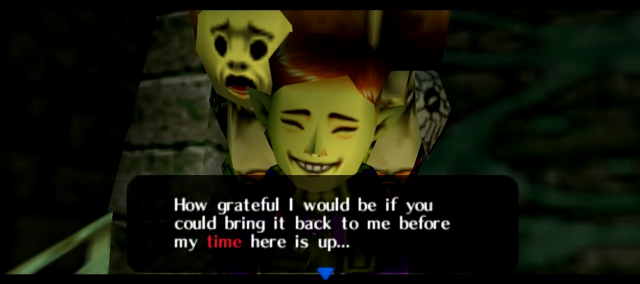
The Salesman sets you on a fetch quest.
It’s easy to forget that Link’s adventure in Termina is initially framed as a fetch quest: when he arrives inside the Clock Tower, the Happy Mask Salesman simply asks Link to retrieve Majora’s Mask for him within three days’ time, since he is only in town for three days. This is the context with which Link ventures out into Clock Town and Termina for the first time. His adventure only becomes a story of fighting evil once he confronts Skull Kid atop the Clock Tower for the first time, “remembers” the Song of Time, and travels back in time, meeting the Happy Mask Salesman inside the Clock Tower for a second time. When Link fails to produce Majora’s Mask, as the Happy Mask Salesman asked, the Salesman flies into a rage, warning Link of what will happen if he fails to recover the Mask. I quote at length:
“What have you done to me!!! If you leave my mask out there, something terrible will happen! The mask that was stolen from me… It is called Majora’s Mask. It is an accursed item from legend that is said to have been used by an ancient tribe in its hexing rituals. It is said that an evil and wicked power is bestowed upon the one who wears that mask. According to legend… the troubles caused by Majora’s Mask were so great… the ancient ones, fearing such catastrophe, sealed the mask in shadow forever, preventing its misuse. But now, that tribe from the legend has vanished, so no one really knows the true nature of the mask’s power… …But I feel it. I went to great lengths to get that legendary mask. When I finally had it… I could sense the doom of a dark omen brewing. It was that unwelcome feeling that makes your hair stand on end. And now… that imp has it… I am begging you! You must get that mask back quickly or something horrible will happen!”
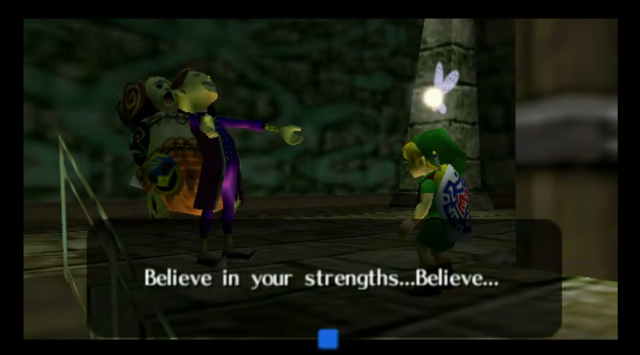
The Salesman encourages Link and the player.
It’s easy to take the Salesman at face value here, but I think another analysis better explains the data of the overall game and world of Termina: namely, the Salesman is imposing an artifice of morality upon Termina and Majora’s Mask in order to motivate Link and the player to get his mask back for him. For at this point in the game, Link has already failed once to complete the Salesman’s fetch quest; thus it seems reasonable that the Salesman would seek to further motivate Link to complete the task. An easy way to do this is to suggest that the mask is endowed with evil power and thus must be recovered in order to prevent something terrible from happening. Combined with the observation that there is no obvious Triforce-analogue grounding morality within Termina, it seems plausible that the appearance of evil in Majora’s Mask is just that: mere appearance, rather than something evil in a metaphysically deep sense.
Moreover, the Happy Mask Salesman as an entity seems to be in just the right position to impose an “apparent morality” on Termina–this is what I call ‘moral artifice’, or moral dimension that lacks metaphysical grounding in a world, imposed by an external source. For the Happy Mask Salesman himself doesn’t really exist within Termina; rather, I think it makes sense to consider him as metaphysically adjacent to Termina: he exists externally to Termina but is poised to influence and interface with the world in a variety of ways. Inside the Clock Tower, where the Salesman resides, time does not flow, as it does in the rest of Termina. Moreover, it is implied that the Salesman effectively has comprehensive knowledge of Termina–without ever leaving the innards of the Clock Tower, he knows the origin and ontology of every mask Link acquires throughout the game, including masks that Link creates by healing fallen heroes (he describes the origins of these masks in vivid detail if Link speaks to him while wearing the masks). Moreover, he is the one who imparts to Link the Song of Healing, which allows Link to drastically change the structure of Termina by converting spirits into masks. This is the song that is described as healing “evil and troubled spirits”–again, the concept of evil is fundamentally introduced into the game by the Happy Mask Salesman. So it seems that even when we see evil at work in Termina, this is only the case because the Salesman is coloring the world this way for us. Again, there is no Triforce or heroic destiny guiding us here–we are left with only the guidance of a disarmingly smiling Salesman in pursuit of a fetch quest.
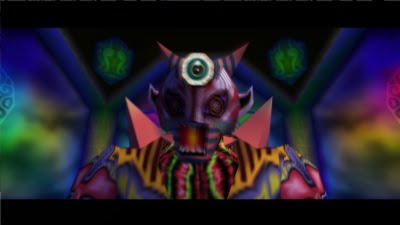
The final confrontation against Majora’s Forms.
It’s worth noting, too, that when morality is introduced to Termina via moral artifice, it seems to center on the entity of ‘Majora’: the Salesman refers to an evil possessing Majora’s Mask, and the various putatively evil forms in the game–Majora’s Mask, Majora’s Incarnation, Majora’s Wrath, and the masks sealing away Termina’s four giant–all derive their apparent relation to Majora. When Link obtains the Fierce Deity’s Mask, too (discussed further below), the game asks whether “this mask’s dark powers could be as bad as Majora” (emphasis mine), again deriving moral valence from the mask’s relation to Majora. But notice that it’s not at all clear in the game exactly who or what Majora is: Link only ever confronts various forms derived from from Majora (Majora’s Mask, Incarnation, and Wrath), and the Salesman never says outright what Majora is. One virtue of the theory outlined above is that it gives us the resources to explain what Majora is: on my view, Majora is just identical with the concept of evil that the Salesman has imposed upon Termina. This makes sense when we consider other references to evil and to the impact of Majora on the world of Termina: in every corner of the world, we see that Majora has effected “evil” by distorting the natural order of things–a swamp is poisoned; a mountain in trapped in endless winter; an ocean is clouded and storm-ridden; and a desert is corrupted by lingering spirits and death. We can analyze these effects by saying that Majora, as the concept of evil, is distorting the universe of Termina, because Termina is a world that does not support moral facts or reality: by trying to impose morality upon Termina, the Salesman is distorting the very foundations of the world. (You can read more about Majora as Termina’s concept of evil here.)
If the above metaphysical considerations haven’t convinced you that there’s no basis for morality within Termina, then I invite you, lastly, to consider how the game treats morality in its ultimate confrontation: Majora’s Forms versus the Fierce Deity. Though the player needn’t acquire and use the Fierce Deity’s Mask to defeat Majora’s Forms, the game implies that this is the “proper” way to complete the narrative: the Mask is only available once the player has acquired all other masks in the game, at which point they must give those masks away to the various Moon Children with whom Link can play hide-and-seek before facing Majora’s Forms. At that point, Link can speak to the Moon Child wearing Majora’s Mask, who, noting that Link doesn’t have any masks left, says that they can instead play “good guys against bad guys,” and tells Link that Link is the bad guy in the game. He gives Link the Fierce Deity’s Mask, which, again, is described as a mask with dark powers that could be as bad as Majora.
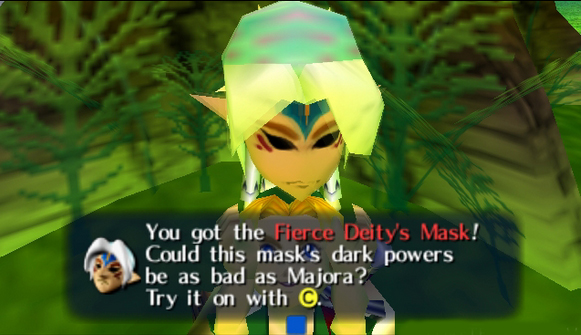
Link receiving the Fierce Deity’s Mask.
In the final confrontation of the game, Link isn’t framed as a destined hero battling the Great King of Evil: he’s framed as a child playing the role of a villain in a game of good-and-evil. Moreover, the Fierce Deity’s Mask effectively turns the game’s final boss fight into “child’s play”: Majora’s Forms as frankly pathetic when faced with the Fierce Deity’s Mask, and it is trivial for the player to massacre a final boss that is quite challenging when faced without the Fierce Deity’s Mask. So the final battle isn’t a moment of heroism; rather, it’s a game in which Link takes on a mercilessly evil role. If we think that good and evil really have a metaphysical basis in Termina, it’s not clear how to make sense of this confrontation, nor is it clear how to make sense of Link’s relationship to the Fierce Deity’s Mask more generally; on the other hand, armed with our thesis that Termina lacks real moral grounding, this final battle is a poignant accent on the fact that the universe refuses to acknowledge Link and the player’s quest as morally significant.
If we accept the above arguments, then I think we already have ample reason to see Majora’s Mask as deeply horrifying, especially when we consider the game’s status as the sequel to Ocarina of Time. The player, having defeated the evil Ganondorf on Link the Hero’s destined quest in Ocarina, expects the same sort of heroism and triumph of goodness over evil in Majora’s Mask. The Happy Mask Salesman even assures them that they are right to expect this sort of heroism and goodness in their quest–he does this by imposing a moral artifice upon the world of Termina for the player and Link. Yet, over the course of the game, the player slowly discovers that there is no moral foundation for Link’s quest: there is no Triforce, no heroism, and no reason to believe that Link is doing something inherently good in his quest. And so the player is forced to confront the question: just what is the purpose of Link’s quest, as he goes to such lengths to fetch a mask for a Mask Salesman? The more the player looks for an ethical justification in Termina, the more it eludes her–and the loss of this basis for Link’s quest is a fearsome thing indeed.
In fact–despite this view being “against Zelda canon”–I think the scariest thing to emerge from this metaethical analysis is the implication that the Link of Majora’s Mask isn’t the same Hero of Time whom we encountered in Ocarina of Time. This strikes me as the best explanation of Majora-Link’s not possessing the Triforce of Courage, of ultimately donning the form of a dark god (the Fierce Deity), and generally bearing no relation to destiny in the way that Ocarina-Link did (you can read more about this here, and about how Majora Mask’s flashback to Zelda fits into this analysis here). So on my view, the deepest horror to be found here is just this: the player steps into Majora’s Mask expecting a classic tale of Zelda heroism, and slowly discovers that they literally aren’t controlling the hero that they thought they were. It is this profound alienation that makes the playing of Majora’s Mask a terrifying experience.
The Terminal Metaphysics of Termina: Majora’s Mask and the World that Can’t be Saved
Even if we agree that there’s no foundation for morality within Termina, we might still think that the player and Link can achieve something meaningful by “saving” Termina from the moon falling on Clock Town and the rest of the world. However, I think that trying to make sense of the game in this way just invites further horror, as we discover that Termina isn’t the kind of world that can be saved: rather, it is a world that is fundamentally doomed, and Link cannot change this fact. I’ll defend this claim in three parts: first, I’ll argue that Termina depends on Link for its existence; then, I’ll argue that Termina is constrained to three-day timelines; lastly, I’ll argue that the timelines of Termina are endlessly iterative. From these arguments, a picture emerges of Termina as a world that truly is Termina: though Link can participate in the world, he cannot save it from its doomed state.
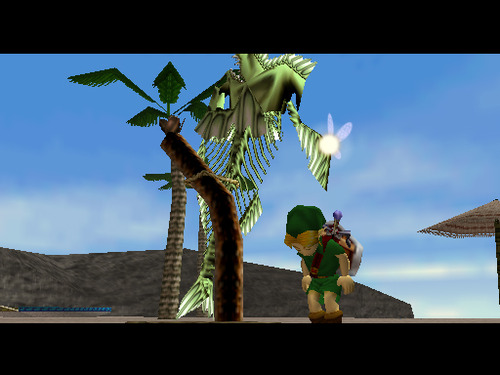
Termina is a strikingly unusual video game world, and only because time in the world constantly counts down towards the apocalypse: events in Termina also happen in an unusual way. The best way to see this is to consider the puzzle of the Zora hero Mikau, who tragically dies during the course of the game (I case that I explore in detail here). When Link arrives at the Great Bay, he sees Mikau dying in the water: the player must bring him to shore and use the Song of Healing to convert his spirit into a mask as he dies–and then Link buries him, in one of the most poignant and jarring moments of the series. There are many things to say about this moment, and I’ve written much about it in the past; for our purposes, however, we just need to think about one surprising puzzle that emerges from this event: what was the status of Mikau in timelines before Link arrived at the Great Bay? By the time Link arrives at Great Bay, he has already traveled through multiple three-day cycles of Termina; presumably, we would want to say that Mikau still existed in those timelines prior to Link discovering him in the water. Yet the state in which Mikau existed in these prior timelines is not at all clear. Certainly he is not dead: he only dies once Link encounters him. Yet it also doesn’t seem quite right to say Mikau is alive and well in previous timelines, for he dies as soon as Link encounters him: we know he is dying and can’t survive the three days. So it seems as if we have to say that he is in an indeterminate state of being neither dead nor alive, but rather in a state of dying, suspended there until Link encounters him and he truly dies.
I think the conclusion to which considerations such as the above lead us is that the world of Termina actually depends on Link encountering it in order to exist. Beyond Mikau, we can also see (for example) that time doesn’t actually pass in Termina except when Link is there: when he enters the inside of the Clock Tower, time in Termina freezes until he exits into Clock Town. Generally speaking, the progression and instantiation of events in Termina do not proceed without Link. If you like, it wouldn’t be far off the mark to say that Termina is “solipsistic” with regards to Link.
The existential dependence of Termina on Link doesn’t alone simply anything obvious about whether or not Termina can be saved; however, a clearer and scarier picture of these implications emerges when we consider this dependence relation together with the iterative-timeline metaphysics of Majora’s Mask.
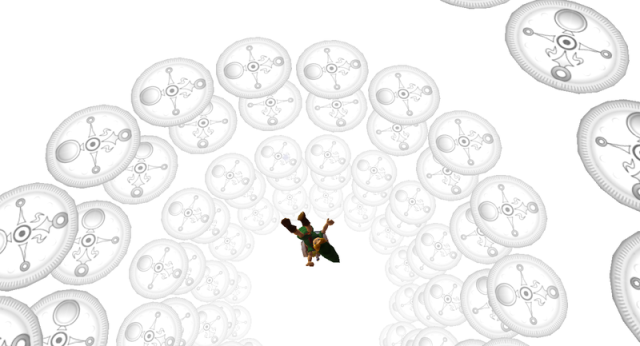
Link bringing about a new timeline in Termina.
It seems clear to me that Link and the player progress through the game’s storyline by instantiating new timelines each time he plays the Song of Time. I detail this argument here, but the general thought is just this: Link clearly doesn’t reset the universe of Termina each time he plays the Song of Time, as various states of affairs throughout the world can change each time. Mikau, again, is an example: once Link sees Mikau die, he does not appear again even after Link plays the Song of Time. Link also retains the masks he acquires even when he plays the Song of Time. Thus I think that the best explanation of the Song of Time is that it allows Link to effectively abandon the timeline of Termina in which he’s currently situated, and travel to a new timeline that is linked to the most recently abandoned timeline by what I call ‘temporal afterimages’–metaphysical remnants of earlier, alternate timelines. As an aside: this notion of temporal afterimagery, I think, has broader applicability in the series: even when Link alters time, the inhabitants of whatever new timeline he brings about seem to have “remnant” memories of previous timelines; again, the Zelda flashback in Majora’s Mask is a prime example of this.
With a metaphysical picture in view of Link’s journey through Termina as bringing about increasingly more timelines as the game progresses, we can better understand the implications of Termina’s existential dependence on Link: Link only ever encounters Termina as three-day timelines, bounded by his arrival on one hand and the apocalypse on the other hand; thus, if Termina’s existence really does depend on Link, then Termina itself seems metaphysically constrained to Link’s arrival and its apocalypse. There seems to be no broader existence of the world that Link can fight to preserve.
But, you might now object, this is clearly false: if you beat the game, then we very clearly see that Link has saved Termina, once and for all; thus, there is a greater existence to the world that Link can fight to preserve. Yet I think we have every reason to doubt this, and to take this ending to the game instead as a case of unreliable narration (about which you can read in more detail here). For one thing, the ending doesn’t make much sense with regard to the overall narrative. We know that Link cannot save everyone in Termina over the course of a single timeline, yet the ending “victory” scene of the game implies this sort of success, with everyone in the world happy. And, even more pressingly, the game itself implies that the perpetuation of doomed Termina timelines persists after the end of the game. We can see this because there are certain events that the player can only bring about after she instantiates a new timeline in Termina after beating the game. For example, one of the functions of the Fierce Deity’s Mask is to allow Link to transform into the Fierce Deity during the four Giant boss battles in the game; and, since Link only gets the Fierce Deity’s Mask during the final battle of the game, he must go back and bring about another doomed timeline to use the mask in this way. Notice how starkly the above vision of Termina contrasts with the world of Ocarina of Time: it is not possible to “continue” in Hyrule after defeating Ganon; the game simply proclaims that the game has ended, and, if the player reloads her save file, she returns to wherever her last save was before defeating Ganon. Termina could just as easily “conclude” if Link were able to really save it; yet the very fact that the player can return to Termina and bring about further doomed timelines even after beating Majora’s Forms suggests that there is no way to truly overcome Termina’s doomed fate.
Though we might initially trust the game in telling us that Link can save Termina, the metaphysics of the world tell us otherwise: beyond the metaethical nihilism of the world, it is not even possible for Link to end the apocalyptic timeline cycle of the world. Termina, as the name suggests, is inherently terminal: it should fill the player with horror to realize that they are engaged in a Sisyphean struggle to save a world that literally cannot be saved.
Conclusion
As we reflect on the overall horror of Majora’s Mask, it’s useful to contrast Kaepora Gaebora, the owl and sage whom Link encounter in Ocarina of Time, with Kaepora Gaebora, the owl whom Link encounters in Majora’s Mask (I study the owl in more detail here). In Ocarina, Kaepora Gaebora is a manifestation of the sage Rauru, who guides Link on his quest to defeat Ganondorf. Kaepora Gaebora inundates Link with the message that he is the Hero of Time, and that it is his destiny to travel through time to defeat Ganondorf. He repeatedly emphasizes what I said above: the Link of Ocarina is an agent of goodness and courage who will ultimately save Hyrule.
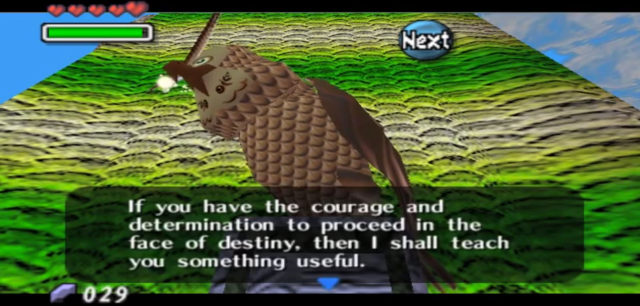
The Kaepora Gaebora of Majora’s Mask is virtually antithetical to his Ocarina of Time counterpart. He constantly treats Link as an intruder in a world that he describes as “destined to fade,” and offers to help Link only if he has “the courage and determination to proceed in the face of destiny.” Rather than Link being destined to save the world, Link is fighting to save a world that is designed to be destroyed. This in essence, captures the horror of Majora’s Mask: at every turn, the player expects to be able to do the right thing, and to save the world; yet, at every turn, the game denies the player the ability to find any moral justification for her actions, along with any possibility of truly saving the world. Without this foundation for making meaning out of Link’s journey, the player is left to make up some form of alternative meaning for the journey through Majora’s Mask. If you read my full analysis, you’ll see that I actually do think this is possible, and that the player can ultimately be a positive and meaningful force in the world of the game–but this is only possible once she overcomes the initial horror of the game, a horror which you’d be hard-pressed to overstate.
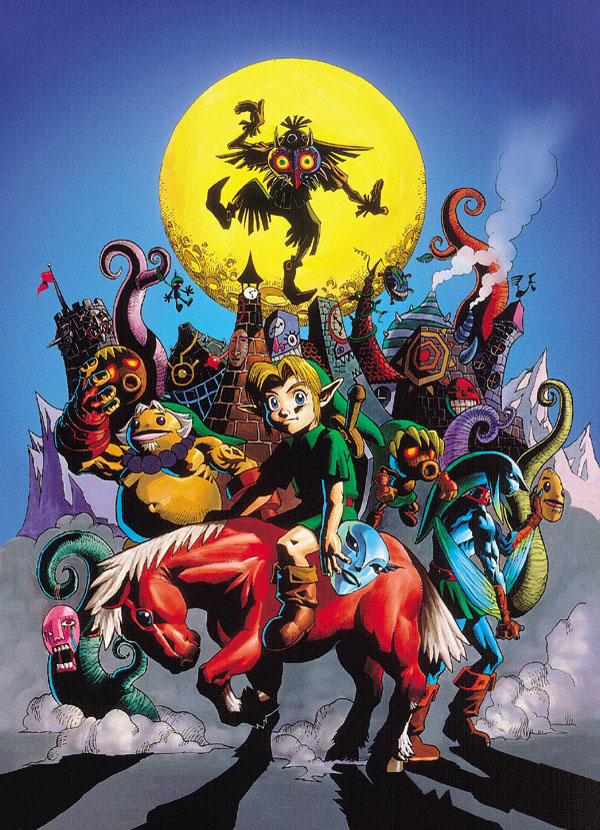
The Philosophical Justification for FromSoftware’s DLC
Regulars to With a Terrible Fate know that I tend to be skeptical of the potential for justifying add-on video game content as artistically valuable to the video game experience. For example, even though I ultimately argued that Nintendo’s amiibo are philosophically justifiable, I rejected many of the typical reasons why someone might think amiibo are valuable. So, when it comes to DLC (“downloadable content”), you probably won’t be surprised to hear that I’ve historically been extremely skeptical of its value as well. Like many others, I’ve feared that DLC makes it all too easy for developers to release games that are, in one way or another, incomplete, and then compel the player to complete the game by paying for additional content later on.
However, as is often the case, FromSoftware, the studio behind Dark Souls and Bloodborne (among other games), has challenged my assumptions about game development. In this article, I’m going to discuss two cases of FromSoftware’s DLC that I take to be imminently justified as aesthetically valuable additions to their parent games: Dark Souls 3‘s “Ashes of Ariandel” and Bloodborne‘s “The Old Hunters.” First, I’ll outline what I take to be the general dilemma that makes DLC so difficult to justify as a supplementary work of art. I’ll apply this dilemma to System Rift, the recent DLC for Deus Ex: Mankind Divided, to show how it helps to explain why DLC fails when it does. Then, I’ll argue that our two test cases solve the dilemma facing DLC in surprising and informative ways.
DLC and The Completeness Dilemma
To begin, we need to be more precise with how we’re defining ‘DLC’. After all, all sorts of material could potentially fit the broad label of “downloadable content”–for example, extra weaponry, bonus outfits for avatars, extra songs for a game’s soundtrack, and so on. In this article, I’m only concerned with DLC that purports to extend the narrative of a video game. Granted, that’s a rather broad definition, and I’m not going to try to provide a full analysis of ‘narrative’ for the purposes of this article. However, our intuitions should give us a good idea of what I’m talking about here: these days, many story-rich games feature DLC that “adds on” to the story of the main game by adding a new plot line, either in an old area of the game’s world or in a new area of the game’s world created just for that DLC. Think of DLCs like Skyrim‘s Dawnguard and Dragonborn, or Dishonored‘s The Knife of Dunwall and The Brigmore Witches. These are all examples of the type of DLC I have in mind.
Why focus this particular type of DLC? As I’ve argued from the start of With a Terrible Fate onward, I believe that video games as a medium facilitate new, robust forms of narrative that wouldn’t be possible in other media. In light of this, I think it’s especially interesting to see what implications DLC has for video games specifically as a vehicle for storytelling. And indeed, I will aim to show here that DLC does have interesting implications and insights regarding the nature of storytelling in video games.
Before we dive into any concrete examples of DLC, I think it’s fairly easy to notice a problem for DLC on the level of pure theory. I call this problem ‘the completeness dilemma’, and the dilemma goes like this: for DLC to be possible, it must be possible to extend the narrative of the main video game to which the DLC is appended. However, video games, as a narrative art form, already have a complete world with a full story that has a beginning, middle, and end. So, for the narrative of a video game to be “extendable,” it stands to reason that the original game’s narrative must, in some sense, be incomplete. And so the completeness dilemma is that either a video game’s narrative is complete, in which case DLC for the game is impossible, or else DLC for the video game is possible, but the original video game’s narrative was incomplete.
There are two qualifications I have to make immediately about this dilemma, both of which have to do with exactly what I mean by “complete” and “incomplete.” As written, the dilemma might strike readers as wildly implausible. After all, you might say, countless narratives, in video games and in other media, have sequels, which would also seem theoretically impossible by the above logic. So something must be wrong with the above analysis.
I actually think there probably are substantive theoretical problems for sequels/prequels/etc. based on the above logic, but I’ll set those aside for now because I do think the completeness dilemma for DLC is a different issue than any problems that arise for sequels. The key is that DLC “extends” the narrative of a video game in a different way than a sequel “extends” the narrative. Broadly speaking, sequels tend to tell an entirely new narrative that takes the former game’s narrative as a starting point, whereas DLC tries to enrich a game’s narrative by adding other events that are coextensive with and subordinate to that game’s narrative. This makes sense when you think of DLC as “add-on content”: rather than telling a whole new story, like a sequel would, DLC “adds on” to a game’s narrative, aiming to supplement it with “more” story. So, for example, a DLC might add a storyline that happens during the events of a game’s main story, but that involves different characters than the main game’s avatar. This was the case with Dishonored‘s DLC, which had its own problems as a result. Or, alternatively, DLC might add a new episode that doesn’t strictly speaking occur at the same time as the events of the main game, but that nonetheless coherently fits as a constituent of the main game’s narrative. This is something like what Deus Ex: Mankind Divided just did with their System Rift DLC, which effectively folds a new “chapter” into the main game’s narrative of Adam Jensen trying to uncover details of a global, augmentation-related conspiracy. So the first crucial qualification to the completeness dilemma is that I’m talking about “completeness” in the sense that the self-contained narrative of a game is internally complete: more precisely, its various narrative constituents are more-or-less coherent with one another, and adding substantially more narrative would interfere with that coherency. This measure of completeness has no bearing on the justifiability of sequels to games.
The second qualification to make about the incompleteness dilemma is that this dilemma is largely grounded in the somewhat unintuitive way that the worlds of video games operate as narrative elements. I’ve argued previously that the worlds of video games are fundamentally designed to respond to the avatar in various ways, depending on player choices. This might seem obvious and trivial, but the result is that the ontology of video game worlds functions to create the game’s narrative. And if a designer has created a world that functions to create the narrative of a game, it isn’t at all clear how you could just “add on” more story or more world in order to extend that narrative. Indeed, doing so, one might think, would completely disrupt the ontology of the game’s world. This is the metaphysical basis for the completeness dilemma; once we see this basis, I think the dilemma itself becomes much more plausible.
Deus Ex: System Rift and The Completeness Dilemma
Beyond purely theoretical considerations, many concrete instances of DLC bear the hypothesis out: a large amount of DLC seems unsatisfying, and I think the reason for this lack of satisfaction just is the completeness dilemma in many cases. To take just one example, let’s look at System Rift, the Deus Ex: Mankind Divided DLC that I mentioned above. In broad strokes, Mankind Divided follows Adam Jensen, the protagonist of the earlier Deus Ex: Human Revolution, as he tries to mitigate rising tensions between the augmented and non-augmented in a world of human-augmentation-through-biotechnology. The main thread of the game’s plot is Jensen’s mission to uncover a secret, powerful group of people, the Illuminati, controlling and orchestrating the course of events at a global scale. At the end of the main game, while Jensen has successfully thwarted a major terrorist, he is left with most of the same questions about the shadow organization he’s been hunting for the entire game. The DLC then picks up with Jensen getting a request from an old colleague (from Human Revolution), Francis Pritchard, to help him infiltrate a major data storage bank, Palisade Blades. Though Pritchard has his own motives for wanting to infiltrate Blades, he also motivates Jensen to help him by pointing out that Jensen could well be able to uncover more information about the Illuminati while inside the facility–indeed, the DLC’s ad campaign actually motivated people to purchase the DLC for this same reason (i.e. finding out more about the Illuminati).
Without diving into too much depth about System Rift, we can pick out two overarching problems with the DLC that the completeness dilemma allows us to explain. The first problem is the selling point of the DLC’s story: uncovering more about the shadow organization that Jensen has been hunting all long. Many people reviewing the DLC have commented in one way or another that the story wasn’t especially satisfying; with our theoretical framework in the background, we can make this complaint more precise and understand just why the story isn’t satisfying. The DLC is predicated on getting answers about an organization that, throughout the first game, Jensen never really fully identified or confronted; in this respect, the main narrative force of the DLC explicitly directs players’ attention to the fact that the main game was incomplete in terms of uncovering the Illuminati. But Eidos Montreal (the developer behind Deus Ex: Human Revolution, Mankind Divided, and the DLC) put themselves in a difficult situation, because they also couldn’t provide in the DLC the real answers about the Illuminati that were missing from the main game: to do so would be to effectively treat the DLC as a resolution to the main game’s narrative, and that would imply that the main game had been “missing” an ending all along–meaning players had to pay extra for the ending. As a result of the above theoretical constraints, Eidos Montreal was effectively forced to make the DLC’s answers to questions about the Illuminati minimal: though Jensen and Pitchard discovered a little about Stanton Dowd’s involvement in the organization, there wasn’t much substantive information to be had.
Of course, if a player is familiar with the broader Deus Ex series, she will know more about the Illuminati based on the earlier Deus Ex games that (confusingly enough) take place in the future relative to Mankind Divided, but this doesn’t change the facts-of-the-matter in terms of what information Mankind Divided and its DLC promise and come short of delivering. The upshot here, I think, is that Eidos Montreal probably intends to make another full Deus Ex game more directly confronting the Illuminati–as we saw above, to have any such direct confrontation in any Mankind Divided DLC would just further compromise the completeness of the main game. But the result is that the DLC feels unsatisfying and unjustified.
I said above that there were two overarching problems with System Rift that the completeness dilemma could help us explain. The first, then, was simply that the story is unsatisfying; the second is that there are continuity problems owing to the fact that the DLC is more of a stand-alone mini-game than it is an add-on to Mankind Divided. By this I mean that none of the actions of the player in the main game has any impact on System Rift–in fact, you can even play System Rift before playing Mankind Divided, though the game warns you that you may spoil some of the main game by doing so. So, despite the game being billed as Mankind Divided DLC, it really ends up being a separable narrative. The most compelling way to recognize this is to notice that none of Jensen’s augmentations carries over from the main game to the DLC: this implies that you’re playing two different versions of Jensen, meaning that the main game and DLC actually can’t exist as part of the same reality (unless you hold a view claiming something like multiple iterations of Jensen exist in the same world and have the same relationships with other people, which strikes me as wildly implausible).
Now, there are real issues with continuity across multiple games in the same series more generally, and it might sound like those are the issues I’m talking about in this case. But again, I’m containing my critique here to focus solely on DLC. There may well be a way to make reasonable sense of multiple games in a series even if a player’s choices don’t carry over between subsequent entries in the series (but see this article on Final Fantasy VII for the serious theoretical challenges that such an explanation would need to overcome), but the problem for DLCs would remain as a result of the completion dilemma. Recall that the whole thrust of DLC is that it extends a game’s narrative; in order to do this, it seems to be a minimal prerequisite that the DLC and main game occur in the same reality, unless there are compelling science-fiction reasons why they don’t (e.g., BioShock Infinite and its Buried at Sea DLC). This might seem obvious, but it points to the heart of what makes crafting effective DLC so difficult: DLC bears the burden of staying in the same reality as the main game while also justifying why its narrative content did not exist as a part of the main game. This is just another formulation of the completeness dilemma.
I should say in closing here that I quite enjoyed Deus Ex: Mankind Divided, and there are plenty of theoretically interesting things to say about the game in a positive light–indeed, I plan to write more on it in the future (and you can read my work on Human Revolution here). My aim here was just to show that the completeness dilemma allows us to understand many of the reasons why DLC tends to fail, along with why it’s so hard for them to succeed in the first place. I encourage readers to take their own least-favorite DLC and see whether this framework can shed light on why it doesn’t work.
The other reason why I dwelled so long on how and why DLC fails is because I think appreciating the extent of the difficulties facing DLC makes us that much more impressed when DLC manages to succeed. I turn to two such examples, Ashes of Ariandel and The Old Hunters, next.
FromSoftware and Ontologically Sound DLC
We’ve seen that DLC, in order to be justified as part of a game’s narrative, must somehow find a way to overcome the completeness dilemma: either a video game’s narrative is complete, in which case DLC for the game is impossible, or else DLC for the video game is possible, but the original video game’s narrative was incomplete. I argue here that FromSoftware has recently released two pieces of DLC that found ways to avoid this dilemma, and that the ways these DLCs avoid the dilemma give us insight into what makes for a sound ontology for DLC and its world. I’ll first look at narrative of imposition found in the recently released Dark Souls 3 DLC, Ashes of Ariandel, and then I’ll go a bit further back in time to discuss the narrative of curiosity found in Bloodborne‘s DLC, The Old Hunters. What we’ll ultimately see is that the key to these DLCs avoiding the completeness dilemma is that they make their status as DLC, along with the player’s choice to purchase and play the DLC, narratively significant.
Ashes of Ariandel begins with an invitation for the player and her avatar to enter a new world and take on a new mission: Slave Knight Gael, prostrate on the ground of the Cleansing Chapel, enjoins you to show the Painted World of Ariandel flame in order to cleanse away its rot. The player is given the choice to either accept or reject this request; only once you accept will your avatar touch a scrap of painting and be sucked into Ariandel.
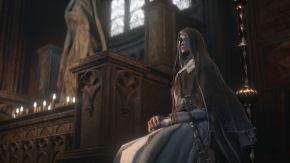
Sister Friede warns you to turn back.
This opening interaction with Gael sets the tone for the entire narrative of the DLC: the game constantly requires the player to reaffirm her choice to take on this alternative mission in Ariandel. When the player and her character first meet Sister Friede, who presides over the Forlorn members of the world (and thus, in one sense at least, presides over the world), she asks the player’s character to leave Ariandel, explicitly pointing out the bonfire next to her as a method of doing so: “Lord of Hollows,” she says, “I know not the missteps which led thee to this painted world. But thy duty is all, and thy duty lieth elsewhere. Return from whence thou cam’st. I presume it is visible to thee? The bonfire here, in this room. A meek and faded thing, but ’twill guide thee nonetheless.” Sir Vilhelm, a knight apparently in Sister Friede’s service, warns the player’s character to heed Friede’s words as well. If the
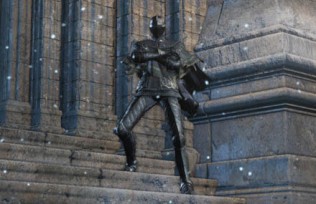
Sir Vilhelm warns you to turn back.
player instead chooses to press onward in the world of Ariandel, Vilhelm eventually confronts and attempts to kill the player’s character, deriding the character as he attacks: “I’ve seen your kind,” he says, “time and time again. Every fleeing man must be caught. Every secret must be unearthed. Such is the conceit of the self-proclaimed seeker of truth.” If the player goes still further, she ultimately returns to the Ariandel Chapel where Sister Friede sits; Friede speaks to the player’s character again: “Be forewarned, eager Ash,” she says, “Should this world wither and rot, even then would Ariandel remain our home. Leave us be, Ashen One. Thou’rt the Lord of Londor, and have thine own subjects to guide.” Ultimately, if the player chooses to continue, she encounters Father Ariandel, in chains in a vast room with vaulted ceilings just beyond Sister Friede. Entering the room does not trigger a cutscene or a battle. Instead, the player must walk her character all the way across the room to Father Ariandel and speak to him; only then does a cutscene initiate, followed by a battle (actually, several) against him and Sister Friede. If Sister Friede kills the player’s character during the fight, she tells the character to “Return from whence thou cam’st, for that is thy place of belonging.”
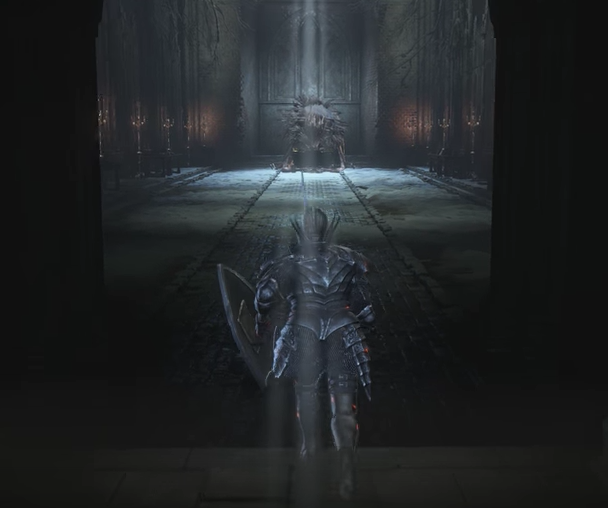
The approach to Father Ariandel. You can still avoid fighting him at this point.
I describe all these moments from the DLC in such detail simply to make the point that the DLC figuratively beats the player over the head with the theme that she doesn’t belong in this world, this isn’t the proper quest or duty of the player’s character, and she should leave. The theme of this DLC’s narrative, if you do choose to play it all the way through, is that you are imposing yourself and your character upon a world and mission that don’t rightfully belong to you. The player cannot credibly claim that she just stumbled into the storyline, or that she just had to go along with the plot line: the DLC begins with a conscious choice to take up a new mission in a new world, and you have to constantly ignore and kill NPCs in order to finish the DLC.
What does this narrative of imposition have to do with the problem of completeness and Ashes of Ariandel‘s success as DLC? I claim that this narrative avoids the problem of completeness by, in a certain sense, “making narrative” the fact that the story is DLC and that the player chose to purchase and play it. To understand what I mean by this, step back for a moment and consider what it means for the player of a game like Dark Souls (or any other game) to purchase DLC for the game. Regardless of the player’s more peculiar, individual motives for purchasing the DLC, it’s fair to say that anyone purchasing the DLC wants something “more” than the main game, whether that’s more plot, more characters, more world, or what have you. But there’s something not quite rational about this desire on the part of the player: certainly players want to play games that are well designed and that contain complete, coherent narratives; yet at the same time, these players are eager for “more” in the form of DLC.
Returning now to the case at hand, the crucial feature of Ashes of Ariandel is that the game’s narrative reflects the player’s decision to play it. The player is trying to take a character that was designed for a specific, internally coherent quest, one that endlessly cycles with different possible endings, and put that character in new environment that, by definition, could not have been a part of that original quest. The avatar, mirroring the player, is leaving its preordained, destined quest as an Ashen One (Sister Friede presupposes the Ashen One’s destiny as the Lord of Hollows, but the argument holds even if the Ashen One chooses a different path through the game) to instead take on an entirely different mission in an entirely different world–a world contained within an entirely different work of art (i.e. a scrap of a painting). Many pieces of the NPCs’ dialogue could be directed to the player just as accurately as to the player’s character: the player of DLC should hear herself reflected in Vilhelm’s words that “Every fleeing man must be caught [and every] secret must be unearthed,” and should recognize that she really is, as Friede says, going out of her way to walk her character through a world not at all related to that character’s initial purpose or design. This union of player and avatar, together with the union of the narrative and its status as DLC, culminates in the long walk down the hall to Father Ariandel: if the player has all been paying attention to the game, she should be acutely aware of the fact that she is choosing, throughout the entirety of the DLC, to disregard the vast majority of voices telling her to turn back.
So FromSoftware avoids the completeness dilemma in Ashes of Ariandel by turning the tables on the player: recognizing the player as part of the game’s narrative (which I have argued many times is the case in all game narratives, whether or not the game is self-consciously concerned with that fact), the DLC tells the story of a world that doesn’t claim to have anything to do with the narrative of the main game, and of a character who decided to ignore their real quest to instead, for want of a better word, invade a totally different world. In other words, FromSoftware avoids the completeness dilemma by pointing out that the player has chosen to purchase and play DLC in spite of the completeness dilemma.
Moreover, FromSoftware seems to have generally recognized the above method as a reliable way to develop aesthetically justifiable DLC. Turning to Bloodborne’s DLC, The Old Hunters, we can see that same method alive and well–but, typical of an adept storyteller, FromSoftware has altered the precise execution of the method to better fit with the themes and broader metaphysics of Bloodborne.
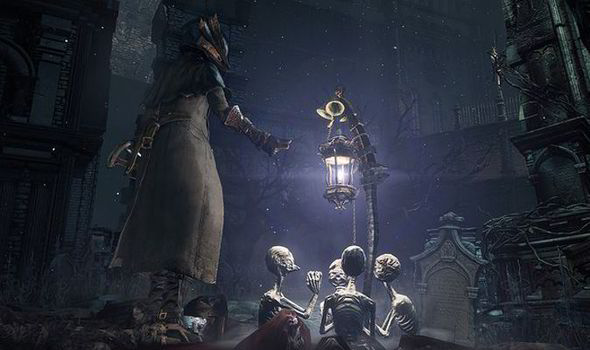
I can’t say enough positive things about Bloodborne, and if you’ve read my earlier work on the game then you know some of the reasons why I think it’s so philosophically rich, in the sense of rigorous metaphysical and epistemic themes and explorations. If you know my earlier work on the game, then you also probably won’t be surprised to learn that I was extremely skeptical when DLC was announced for the game. I thought (and still think) that the main narrative of Bloodborne is practically perfect in terms of internal coherence as a cyclical narrative, in which, no matter which ending the player chooses, they can never truly escape the dream of Bloodborne, nor can they learn whatever truth (if any) lies outside that dream. This was the reason why I continue to hope that Bloodborne never has a sequel, and it was the reason why I doubted that any DLC for the game could truly be justified. However, much like Ashes of Ariandel, The Old Hunters challenged my expectations by making narrative the facts that it was DLC and that I as a player had chosen to play it; the difference was that, whereas Ashes of Ariandel crafted this narrative in terms of imposition, invasion, and shirking duty, The Old Hunters crafted it in terms of curiosity and the limits of our understanding.
The Old Hunters takes place inside The Hunter’s Nightmare, a previously unaccessible part of Bloodborne‘s world which the player can access by acquiring an Eye of a Blood-Drunk Hunter from a Messenger and using it to apparently lure an Amygdala into grabbing the player’s character and transporting it to the Nightmare. Once there, the player is able to unravel a variety of secrets about the origins of the Healing Church of Bloodborne‘s world: she witnesses the hideous beast that Ludwig, the Church’s first hunter, became; she sees the results of the Church’s covert (largely failed) experiments to transform humans into Kin of the Great Ones (the ethereal beings that exist at the edge of human comprehension and are largely responsible for the madness that infects Bloodborne); and she encounters a dead Kos, a Great One whose appearance apparently mutated the inhabitants of a seaside Fishing Hamlet, destroying their sanity in the process.
The Hunter’s Nightmare is a realm for hunters who have been driven insane; the player and her avatar are guided through it by the one remaining hunter with some apparent sanity, Simon the Harrowed. At the beginning of the Nightmare, he warns the player’s character to turn back, “Unless, you’ve something of an interest in Nightmares?” The player can choose to either respond that “I’ve no interest” or else that “Nightmares are fascinating,” and it is only in the latter case that Simon continues to guide the player through the DLC (though the player can of course progress on her own). Simon thus sets the tone of the DLC, albeit perhaps more subtly than the characters of Ashes of Ariandel did: only the curious player has any purpose being here.
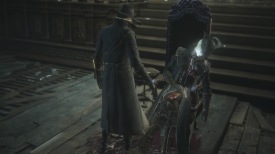
The player’s character investigates Lady Maria’s corpse.
So, if the player chooses to continue in the DLC, it’s fair for the narrative to assume the player is curious: and indeed, the DLC punishes the player precisely for being curious, most notably in two specific instances. First, after seeing the Church’s experimentation facility, the player encounters an apparently dead hunter slumped in a chair at the far end of a clock tower: this is Lady Maria of the Astral Clocktower. The introduction to this boss fight is notably similar to the introduction to the Sister Friede/Father Ariandel boss fight: in both cases, the player must approach the boss
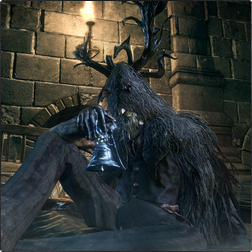
Brador, the Church’s assassin, imprisoned.
from the other side of a long room and choose to interact with the boss before the fight actually begins. In Maria’s case, the player’s character must inspect her corpse, after which she rises from the chair and says that “A corpse… should be left well alone.” She continues: “Oh, I know very well. How the secrets beckon so sweetly,” concluding to the player’s character that “Only an honest death will cure you now. Liberate you, from your wild curiosity.” Later, as the player investigates the Fishing Hamlet, an imprisoned Church assassin named Brador periodically invades and attempts to kill her character. Whenever Brador kills the player’s character, he proclaims that “Unending death awaits those who pry into the unknown.” Both Lady Maria and Brador reinforce the narrative of the Nightmare as the player’s tortured attempt to proceed through countless deaths and eventually satisfy her curiosity for secrets that don’t want to be uncovered.
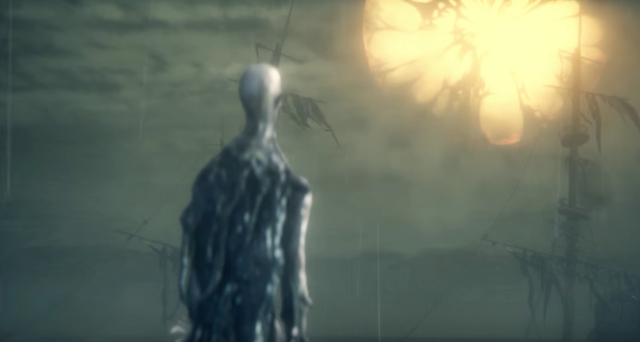
The Orphan of Kos, having just emerged from a deceased Kos.
In a very broad sense, The Old Hunters justifies its DLC in the same way that Ashes of Ariandel does: it tells the story of the player and her avatar trying to get something out of the game that they shouldn’t rationally expect the game to provide. But, as I said before, the details of how they tell this story are different because the narratives of Dark Souls 3 and Bloodborne are wildly different animals. In The Old Hunters, the narrative reflects the player’s desire to answer the game’s unanswered questions, combined with the overarching Bloodborne theme that the answers you seek often lie outside of your epistemic capabilities. The DLC does this in a tricky way: it promises that the Hunter’s Nightmare holds secrets to uncover, but what little the player uncovers only leads to further questions, showing that very little of the original curiosity has actually been satisfied and very few explanations provided by the DLC have been adequate. The DLC pretty obviously shows a connection between Lady Maria and the animated Doll who guides the player through the main game: the characters look the same, have the same voice actor (Evetta Muradasilova), and, once the player kills Lady Maria, the Doll exclaims that she feels liberated in some way. Yet the exact nature of the relationships between these characters is left unexplained. The exact relationships between the various, titular “old hunters” are left unexplained. And, most pointedly, the DLC ends with a battle against a Great One, one of the beings whose very existence is beyond the pale of human comprehension. The ending in particular points to the fact that, even if the player were able to parse out the entire history of the hunters and the Healing Church from the vague hints of the DLC, they would still have gone precisely no distance towards truly understanding the otherworldly Great Ones, the ultimate grounds of Bloodborne‘s horror and narrative force. So the DLC plays on the player’s curiosity by hinting at some explanations of plot elements while also highlighting that the entire crux of Bloodborne is that some great and terrible things–e.g., the Great Ones–are entirely outside human frameworks of explanation and understanding. The player can learn that Kos cursed the hunters who investigated and mutilated the mutated villagers of the Fishing Hamlet, but she cannot learn the truth of what Kos itself truly is.
The world of the Hunter’s Nightmare is not separate from Bloodborne‘s main world in exactly the way that Ariandel is separate from Dark Souls 3, but the framework remains the same–albeit thematically transformed. The base assumption is that the player who has played Bloodborne wants more answers than the game provides, and purchases the DLC in the expectation of having that curiosity sated. Yet the DLC tells a story of explanations and forces that ultimately prove elusive, feeding the player scraps of new information while ultimately returning to the same incomprehensible plane of unknowability that grounded the main game. Just as in Ashes of Ariandel, we have a narrative grounded in the player’s choice to irrationally want more from a complete game–in this case, it’s just couched in terms of the limits of comprehensibility and the madness that follows curiosity, seamlessly marrying its themes to those of Bloodborne.
Conclusion
The completeness dilemma isn’t easily overcome, and those DLCs that simply promise additional story content face a serious challenge as a result. This makes it all the more remarkable that FromSoftware has managed to develop DLC in which not only are the narratives are interesting and engaging, but they are also narratives that would only work as DLC. The narratives overcome the completeness dilemma by inviting the player into the narrative, and telling a story of how bizarre and paradoxical it is that the player would want an extra story to extend a world and story that was already complete. The amazing result is DLC that is justified both intrinsically and also in relation to the main game. Ashes of Ariandel and The Old Hunters set a high bar in this regard, but they also show us that DLC falling short of this bar just won’t work. Try these DLCs out if you haven’t already, and, as you play, reflect on your choice to buy DLC in the first place; and the next time you buy a new DLC, ask yourself whether and how it avoids the completeness dilemma.
Recap and Looking Forward: With a Terrible Fate at PAX Aus
I and my Featured Authors Nathan Randall and Laila Carter were honored to have such a great turnout this past Saturday evening to our PAX Aus panel on the philosophy, neuroscience, and mythos of horror storytelling in video games. You were a great audience, PAX Aus, and we hope you’ll be able to meet With a Terrible Fate again in years to come. I wanted to take this chance to tell fans about the various ways we’ll be following up on our presentation in the coming weeks, as well as what they can expect from the site more generally in the “Coming Soon” category.

Pictured: the 300+ PAX-goers who filled the Dropbear Theatre for With a Terrible Fate‘s horror storytelling panel.
While we weren’t able to record the entirety of the presentation, we do have several video samples from the talk, which we will be publishing. Do check these out and share them if you weren’t able to attend the panel and are interested in With a Terrible Fate‘s take on horror storytelling in the gaming world.
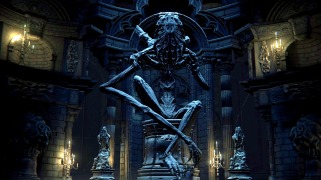
Beyond video samples, we’ll also be publishing full-length articles presenting the arguments we made in our presentation on a more granular level. These articles will provide a robust analysis of the games and frameworks that we presented at PAX, and I hope that you’re able to check them out regardless of whether or not you attended the panel. And you can get started on these right now: my presentation on the metaphysics of Bloodborne was based on an article I wrote last year, and you can read it here.
Also, a number of developers approached me after the presentation and asked whether With a Terrible Fate consults on game development. If you’re interested in finding out what our analytic frameworks can do for you and your product, don’t hesitate to reach out either via email at withaterriblefate@gmail.com, via DM @Terrible__Fate on Twitter, or via message on Facebook. I’d be excited to speak with you more specifically about how we could help your particular project.
Finally, viewers can look forward to With a Terrible Fate coming off its content hiatus with a variety of new material. Without giving too much away, you can expect a new take on Kingdom Hearts: Chain of Memories, an exploration of avatar-player dynamics in The Talos Principle, and a return to Final Fantasy… among other articles I can’t even discuss yet. And, as always, be advised that I take requests, if there’s a particular game that you believe should meet With a Terrible Fate.
Thank you once again to everyone at PAX Aus for the honor of presenting. We’re looking forward to keeping in touch with the many gamers we met there, and we’re excited to see what the future holds for gaming and for With a Terrible Fate.
Explore Horror with Us at PAX Aus
I’m thrilled to publicly announce on the site that With a Terrible Fate will be presenting a panel at Pax Australia this weekend. We’ll be talking about video game horror in the Dropbear Theatre to 7:30PM-8:30PM, and we hope to see you there. Right now, without giving too much away, I want to give you a taste of what you can expect if and when you meet With a Terrible Fate this weekend.
I, With a Terrible Fate Founder Aaron Suduiko, will team up with Featured Authors Nathan Randall and Laila Carter to discuss what makes horror storytelling special in the medium of video games. We’re each going to take a distinct methodological approach to analyzing video game horror based on our academic backgrounds; my hope is that the combination of our very different analytical perspectives will demonstrate how much people can learn about games by considering them through a variety of theoretical lenses.
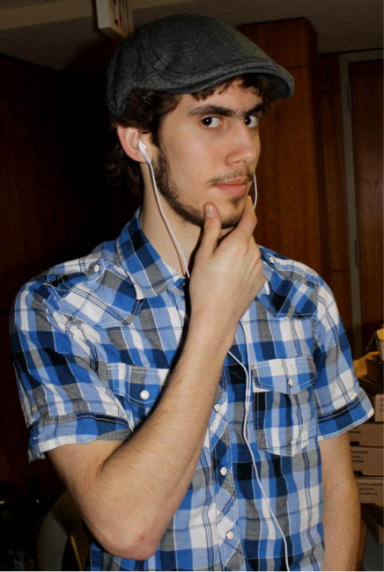
Nathan will be applying the studies and theories of neuroscience to explore what makes for a really effective jump scare in video games. He’ll discuss various learning and fear mechanisms in our brains, and how games are especially well-positioned as a medium to capitalize on these mechanisms. Along the way, he’ll analyze 5 Nights at Freddy’s, Undertale, and even Jazzpunk. Ever thought about the science behind a really good game? There’s a lot to it, and Nate will show you just what makes it all so cool.
 Laila will be exploring how horror storytelling in video games fits into broader, long-standing traditions of horror in folklore, mythology, and literature. What does BioShock have to do with the Odyssey? How does Lovecraftian horror come about in S.O.M.A.? What insight can a Minotaur give us into Amnesia? Laila has answers to all of these questions–oh, and she’ll be talking about “daemonic warped spaces” and P.T., too.
Laila will be exploring how horror storytelling in video games fits into broader, long-standing traditions of horror in folklore, mythology, and literature. What does BioShock have to do with the Odyssey? How does Lovecraftian horror come about in S.O.M.A.? What insight can a Minotaur give us into Amnesia? Laila has answers to all of these questions–oh, and she’ll be talking about “daemonic warped spaces” and P.T., too.
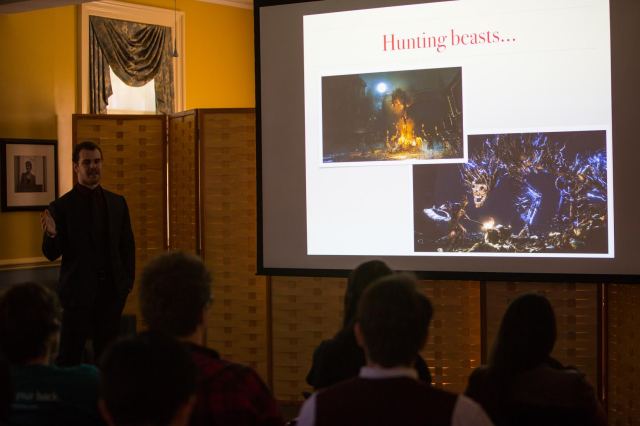
Lastly, I’ll be applying the tools of analytic philosophy, together with my body of work on video game theory, to explore the ways in which games can use the metaphysics of their worlds to generate especially deep-seated and cerebral horror for the player. I’ll argue that the horror of Bloodborne is actually much more realistic than you thought (and you’ll wish I hadn’t shown you why that’s the case). I’ll argue that the metaphysics of Termina imply an interpretation of Majora’s Mask that strays outside the realm of Legend of Zelda canon and instead finds its home in nihilistic terror. I’ll argue that the horror of Silent Hill 2 isn’t fundamentally about James’ relationship with any of the other characters in the town–rather, it’s about his relationship with the player. If you want to get primed for this section (or spoil it for yourself), you can check out my earlier work on Bloodborne and my comprehensive analysis of Majora’s Mask.
We’ll all be hanging around after the panel to answer any questions you may have, and we’ll be around throughout the rest of PAX if you want to keep the conversation going. We’ll also hopefully be able to get the presentation documented in some capacity, so look for that online in the coming week if you can’t make it to PAX Aus.
To all you PAX-goers: see you Saturday.

